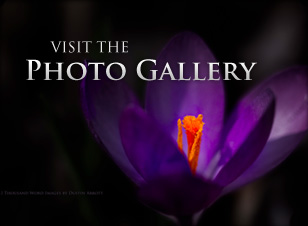LK Samyang AF 85mm F1.8 P Review
Dustin Abbott
July 29th, 2025

Samyang is back…but now they are LK Samyang. My first LK Samyang lens in over two years was of the Schneider-Kreuznach x LK Samyang 14-24mm F2.8 FE. Just two months later, however, LK Samyang reached out to me to look at two new prime lenses from their “Prima” series – the 16mm F2.8 P FE (my review here) and the lens we are reviewing today, the 85mm F1.8 P FE. Samyang had previously done an 85mm F1.4 lens (the Series II review can be found here) and a 75mm lens in both a standard photo F1.8 version (my review here), and, more recently, a video focused V-AF T1.9 version (my review here). What they had never done with a compact lens was an 85mm lens, so I like the idea of the LK Samyang AF 85mm F1.8 Prima lens. The Prima 85mm (as we’ll refer to it as in this review) is a compact prime lens with solid optics, good autofocus, and a reasonable price tag. It feels like a slightly larger, slightly more upscale lens in the spirit of Samyang’s earlier Tiny series. So is this new compact telephoto prime worth right under $400 USD? You can find my full thoughts in the video review linked below or by reading on.
Follow Me @ YouTube | Patreon | Instagram | Facebook | DA Merchandise | Flickr | 500px | X
*This product provided by LK Samyang under license from Jos. Schneider Optische Werke GmbH. As always, this is a completely independent review. *The tests and most of the photos that I share as a part of my review cycle have been done with the Sony a7RV along with the Sony Alpha 1 that serve as my benchmark cameras for Sony lenses. You can visit the product listing for the LK Samyang 85mm F1.8 P here.
__________________________________________________________________________________________________
AI Summary: The LK Samyang Prima 85mm F1.8 FE is a compact, lightweight telephoto lens offering solid optical performance and a premium build at an attractive price point. It provides sharp images with pleasing bokeh and good autofocus both for stills and video, though it exhibits some flare and focus breathing issues during video use. Its main appeal lies in its portability and value, making it an excellent choice for photographers seeking a versatile 85mm lens that fits easily into a travel or street photography kit. Despite fierce competition from other brands, this lens stands out for those prioritizing size, weight, and affordability without sacrificing too much quality.
Strengths:
- Extremely compact and lightweight design, ideal for portability
- Good optical sharpness, contrast, and pleasing bokeh
- Solid autofocus performance for both stills and video
- Premium build quality with weather sealing and firmware update capability via USB-C
Weaknesses:
- Pronounced focus breathing could impact cinematic use
- Limited macro capability with only average close-up magnification
- Some geometric distortion and moderate vignetting that require correction
- No additional custom controls or functions, limiting versatility for advanced users
__________________________________________________________________________________________________
The “P” in the lens name stands for “Prima”, which is a Latin word meaning “first” in the sense of importance. LK Samyang envisions the Prima series being potentially a person’s “first lens” or be the “first lens” that a person reaches for. The compact nature of the lenses (in theory) helps achieve this…though that leads us to a bit of an oddity in this marketing plan. The first Prima lens (which came during the time that I was out of touch with Samyang) was the 35mm F1.4 P FE, an F1.4 prime that seemed to be a slightly smaller and lighter than their earlier 35mm F1.4 AF lens (which I did review here), but was still 100mm long and weighed 470g (still slightly bigger than the Sony 35mm F1.4 GM, though a bit lighter). It felt like a new design direction for what had been their “Series II” lenses, including the 50mm F1.4 II, 85mm F1.4 II, and 135mm F1.8 lenses. I did a video about the Series II lenses as a series here.
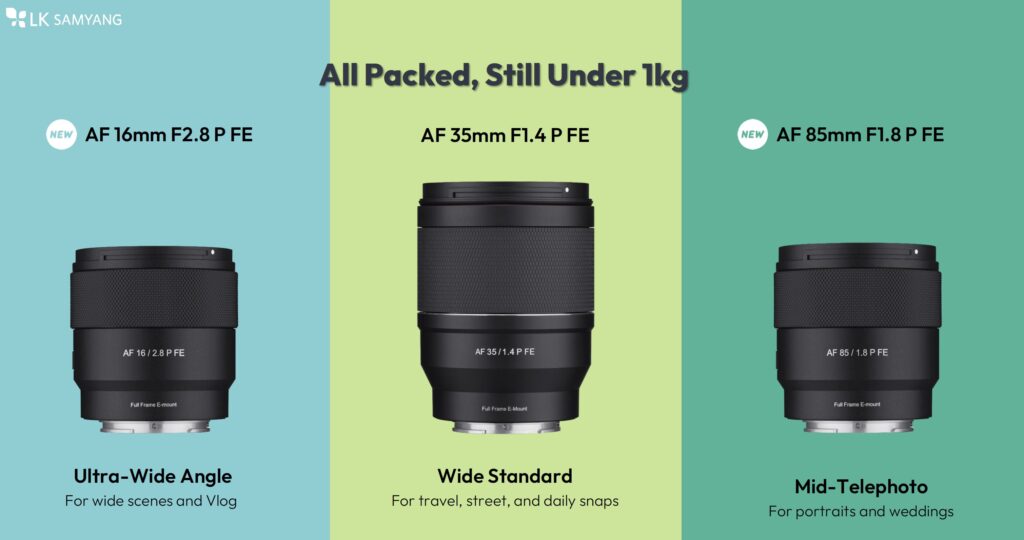
The new 16mm F2.8 Prima and 85mm F1.8 Prime (both of which I’m reviewing at the same time) are very different types of lenses: smaller, lighter, and with smaller maximum apertures. The 16mm and 85mm lenses are nearly perfectly matched in size and are clearly part of a series. Both of these lenses put together weigh about as much as the 35mm F1.4. It’s just odd that these three lenses are being marketed together. It feels like LK Samyang switched direction during their design strategy for this series, and the Prima 85mm feels a lot like an update on the Tiny series with some influence from the V-AF series. Here’s a look at the 75mm T1.9 (left) and the 45mm F1.8 (an early Tiny Series lens) on the right bracketing the two new Prima lenses. The 85mm is narrower (-2.5mm), shorter (-.6mm), and lighter (-8g) than the V-AF 75mm T1.9 shown on the left. It is a bit wider, longer, and heavier than the standard 75mm F1.8 AF from the Tiny Series (not pictured).
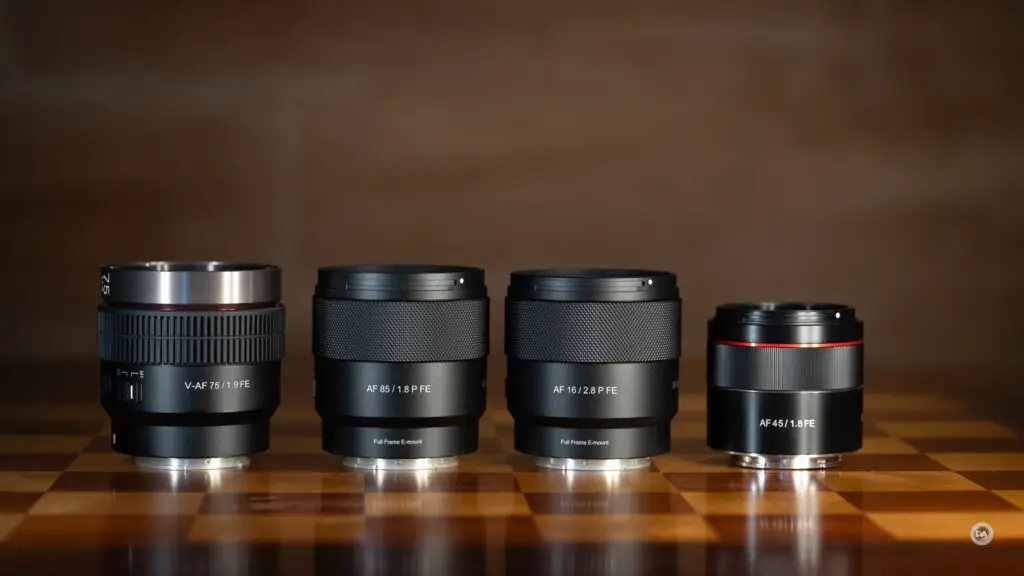
The Prima series carries a nicer build than the Tiny series and feels more premium, though they aren’t priced much higher. Both of these first two lenses in this more compact Prima series are focal lengths never covered by the Tiny or V-AF series. The Prima 85mm weighs just 272g and provides serious portability for a full frame short telephoto prime. It is significantly lighter than the Sony 85mm F1.8 (371g), Yongnuo 85mm F1.8 (346g), or the Viltrox 85mm F1.8 II (484g). The Prima 85mm may be the best direct alternative to the more expensive Sony lens ($598 USD) that we’ve seen thus far, being smaller, lighter, and considerably less expensive (about $200 USD less).
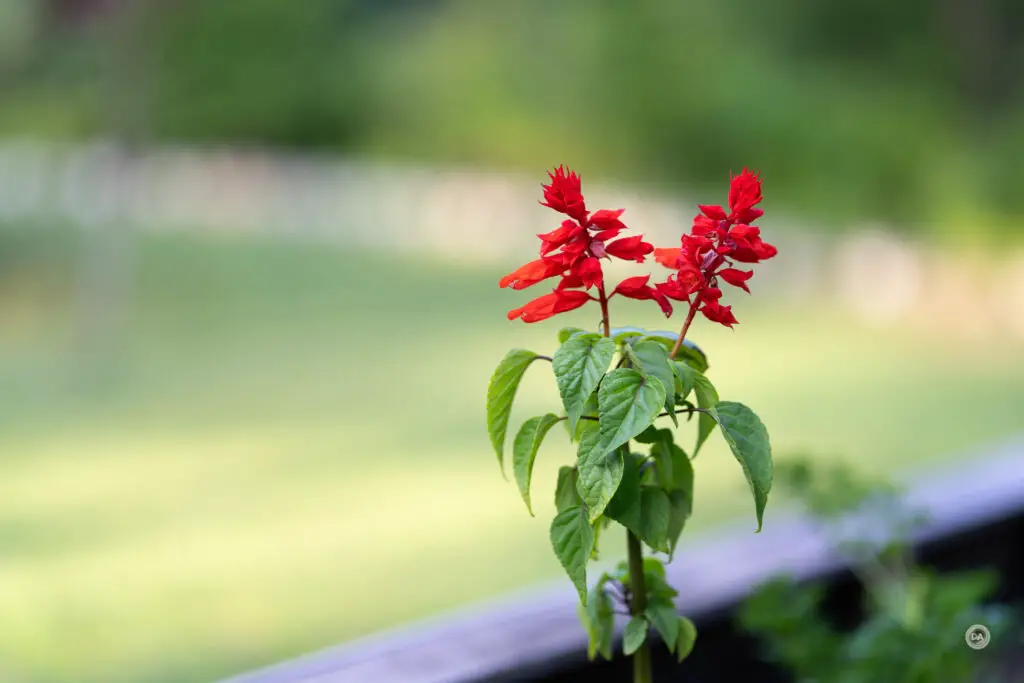
I’ve always loved the beautiful rendering from the Samyang AF 75mm F1.8, and the Prima 85mm F1.8 may even be a bit better, giving you shallower depth of field and really soft backgrounds despite having great detail and contrast.

It’s not a perfect lens, and I’ll highlight the flaws, but all in all this is a sweet little prime that is very easy to bring along and produces really stunning images.
Build and Handling
The Prima lenses seem to be somewhere between the Tiny and V-AF series in terms of quality, though skewed more towards the latter. The V-AF series have some uniquely video-centric features, but the Prima lenses also feel a little more upscale than the Tiny series. They have a few features, some weather sealing, and nicer build materials. In many ways they feel like premium versions of Viltrox’s AIR series, and I consider that a compliment.

You can see from their promotional materials that LK Samyang is touting a new engineered plastic for the housing of the Prima lenses, and the claim that it is tougher, more durable, and has a nice finish. That feels accurate to me, as the plastics feel very tough and I don’t see any visible seems anywhere in the way I sometimes do with cheaper lenses. The finish is very lightly flocked and seems very resistant to fingerprints. It should be easy to keep looking clean.
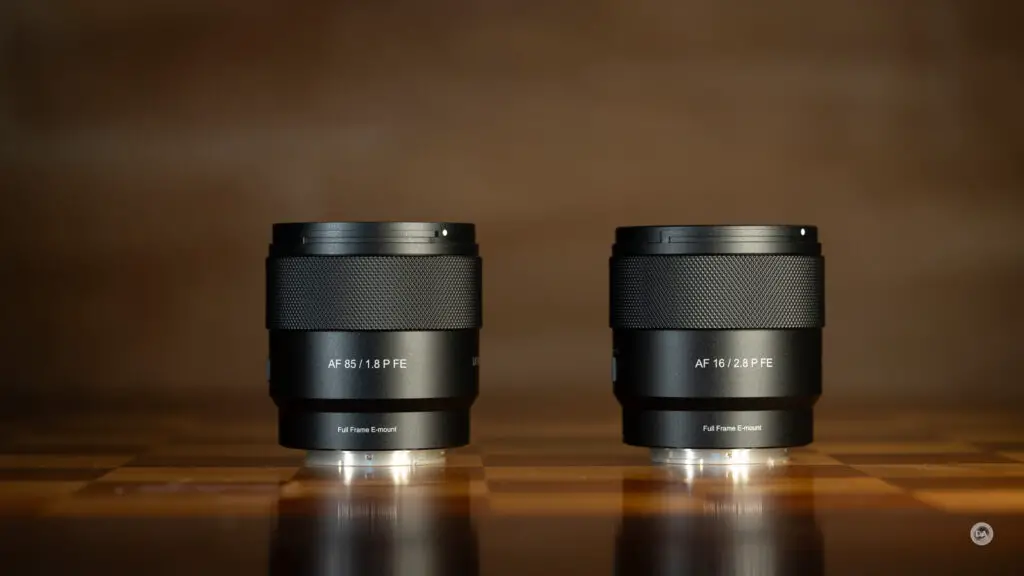
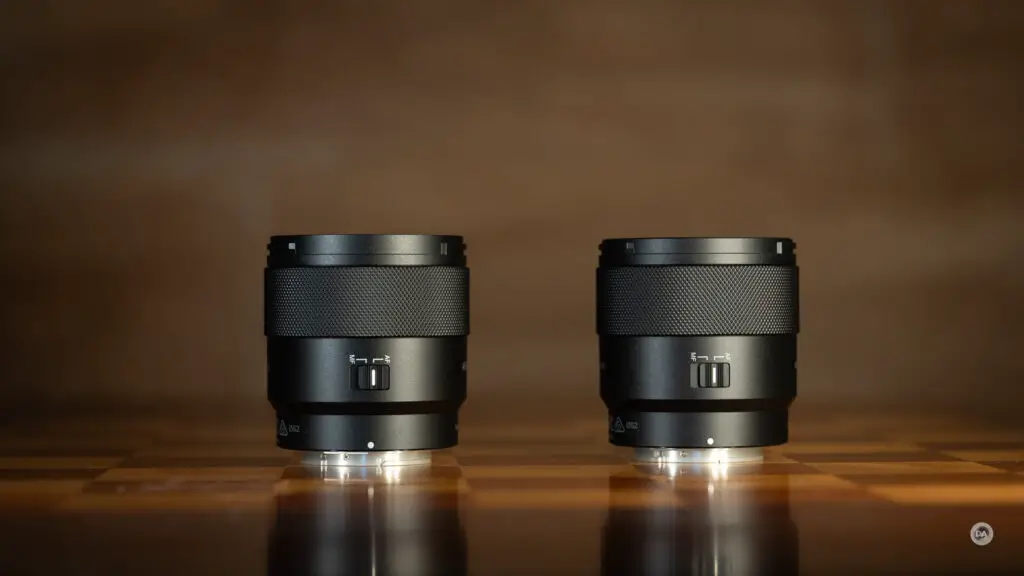
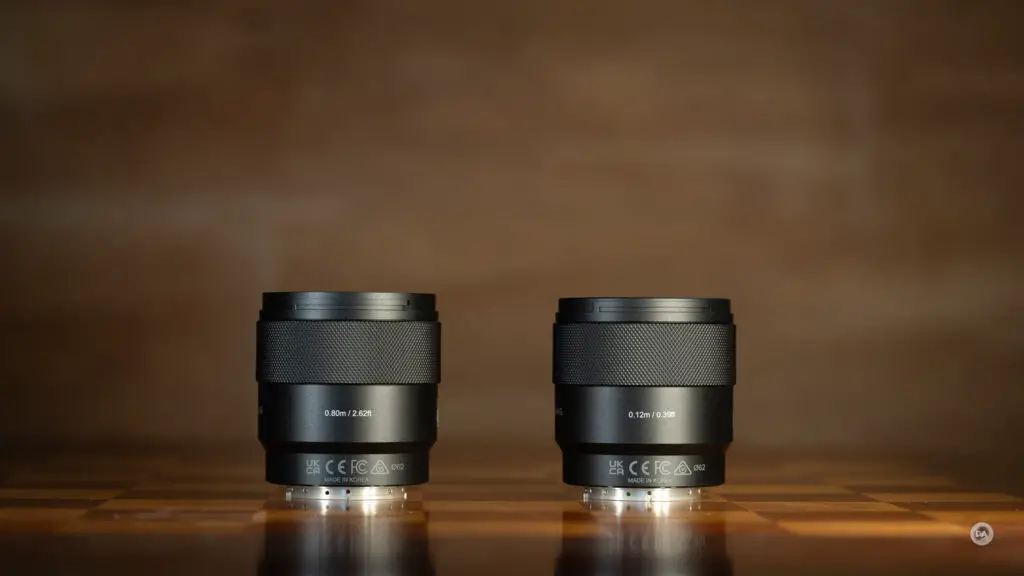
I also want to give some love to the focus ring, which has a more premium feeling diamond texture pattern that looks good from a distance and even better up close.

That ring moves smoothly with roughly 170° of rotation. The damping is on the light side, but there is good precision and the focus motor is highly responsive, allowing for a good manual focus simulation (all mirrorless autofocus lenses have focus-by-wire manual focus).
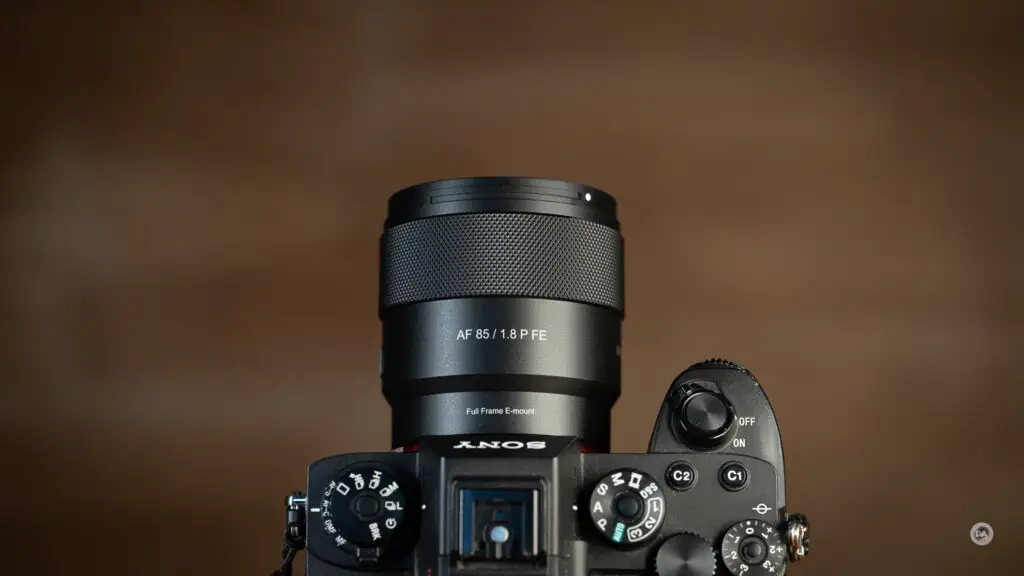
An AF | MF switch on the side makes for easy on-the-fly switches between auto and manual focus.

There is no custom/Fn button on these lenses, unfortunately.
In a new feature for LK Samyang, the Prima lenses have a USB-C port on the lens mount (like Viltrox), which allows for easier firmware updates without needing the Samyang Lens Station.

This is a welcome change.
You might also notice the weather sealing gasket there, which is one of five seals in the lens. There’s also one at the switch, near the focus ring, and a couple to seal the front element.
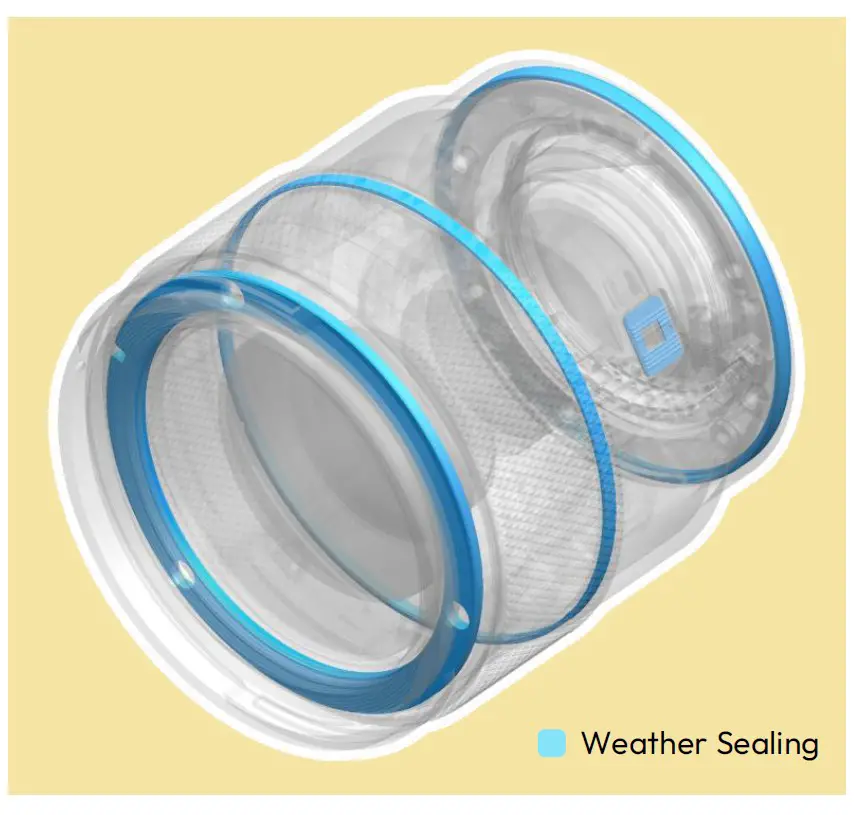
LK Samyang claims internally to have tested up to an IP-5 rating for dust resistance.
Also included in the package is the lens hood, which bayonets on with very good precision. It’s made of similar plastics to the barrel and is a nice match to the lens. The lens hood is quite deep and adds about 45mm of length to the lens, so some may prefer to use the lens without the hood.
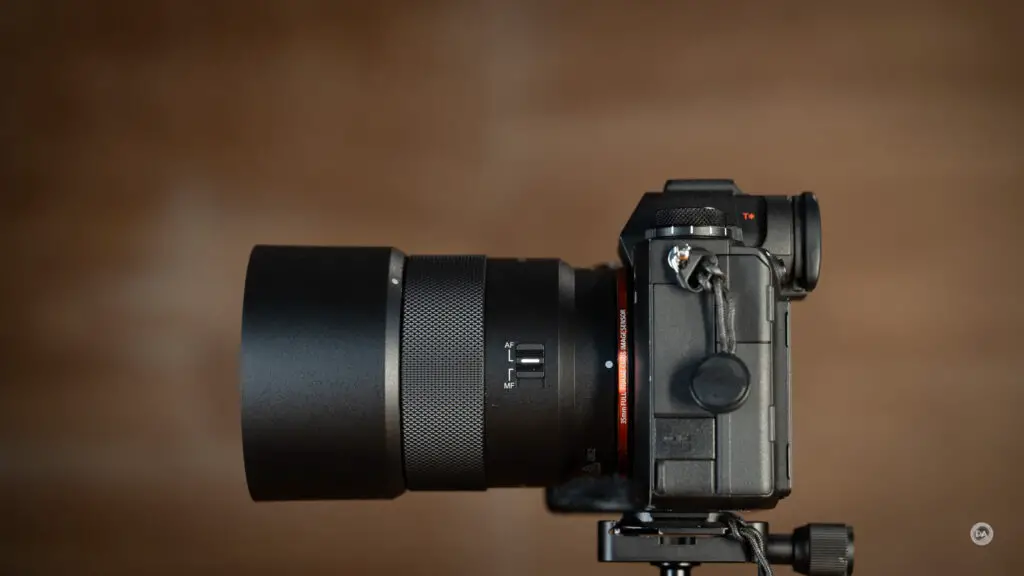
That’s not an advanced feature set, by any stretch, but is definitely a notch above what we’ve seen from Viltrox’s AIR series (no switch or weather sealing) or Sigma’s Contemporary lenses (ditto).
The lens is nice and compact, with a diameter of 69.8mm (2.75″) and a length of 71.5mm (2.8″).
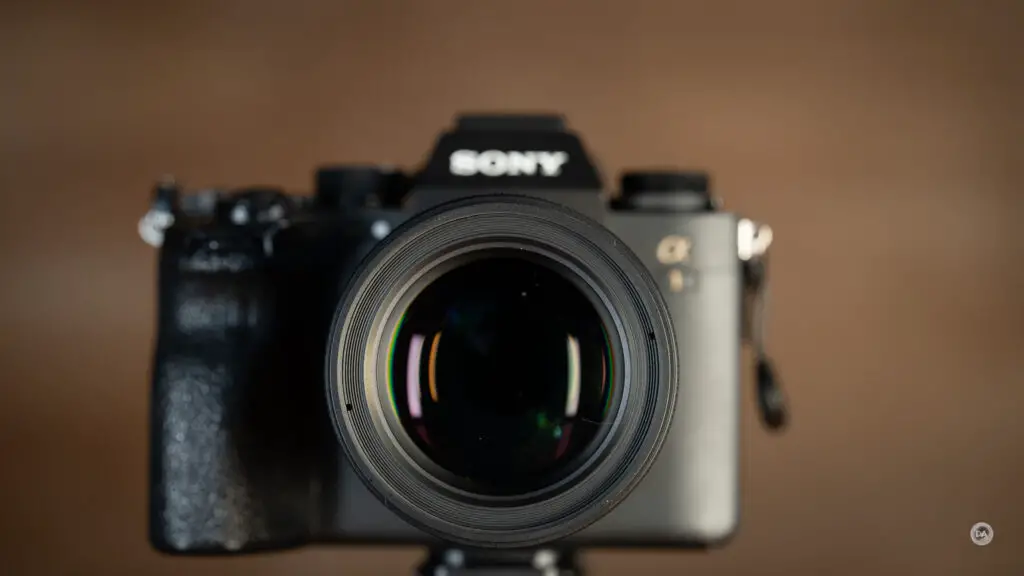
The front filter size is 62mm, which isn’t incredibly common but becoming more so. The 16mm Prima shares this filter size.
The weight, as mentioned is just 272g (9.59oz). It is heavier than the 16mm (bigger glass elements), but as we’ve seen, it is also lighter than competing lenses. This will be a very easy lens to bring along.
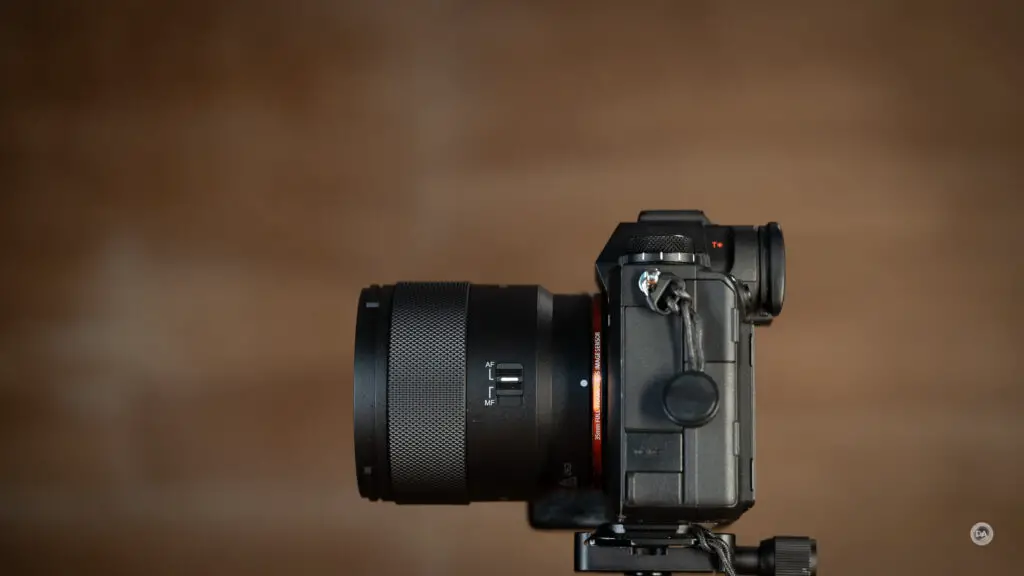
The Prima 16mm sported a very high magnification level, but this is rarely a strength for 85mm lenses, and that’s certainly true here. Minimum focus distance is 80cm, which is identical to all of the competing lenses I’ve mentioned. The resulting 0.12x magnification is very average as well, and it looks like this:
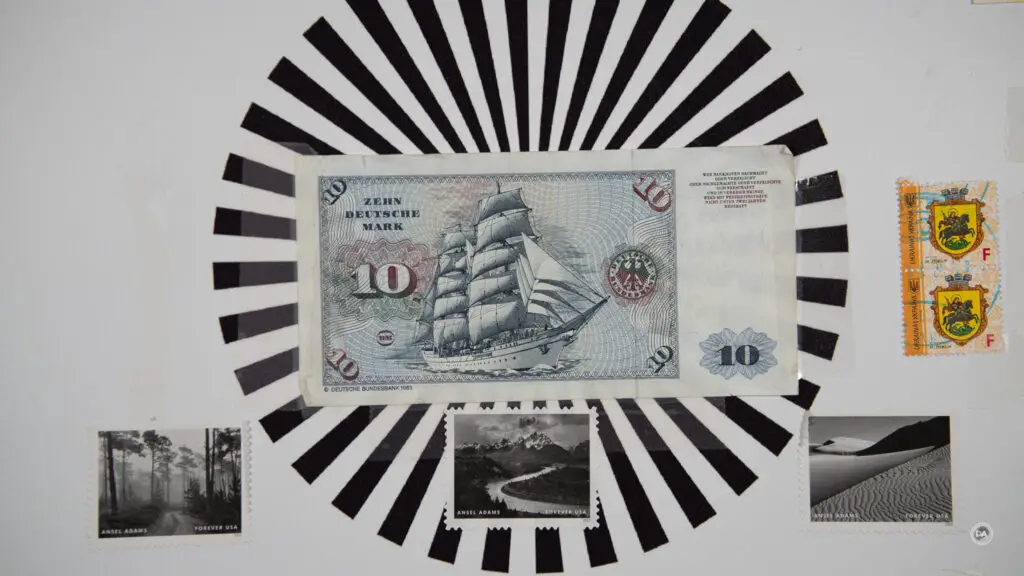
Up close performance at F1.8 is only okay, with microcontrast being a bit lower at this distance than longer distances. You can see from this image that global contrast (whole image contrast) still looks good.
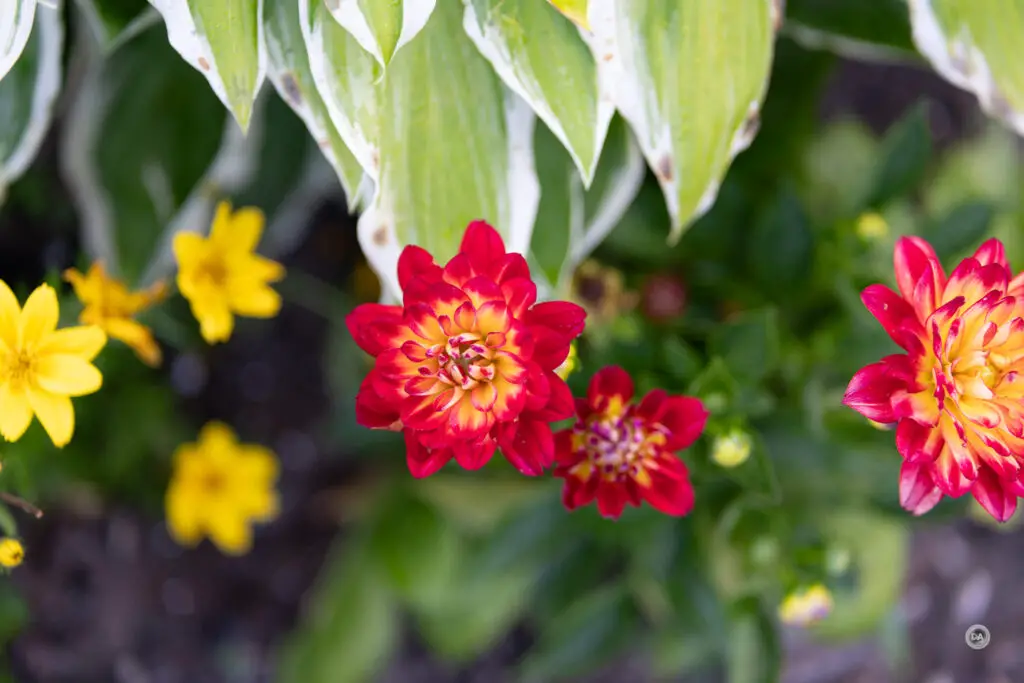
Switch to APS-C and you can get even higher magnification…up to 0.50x, or 1:2 macro.
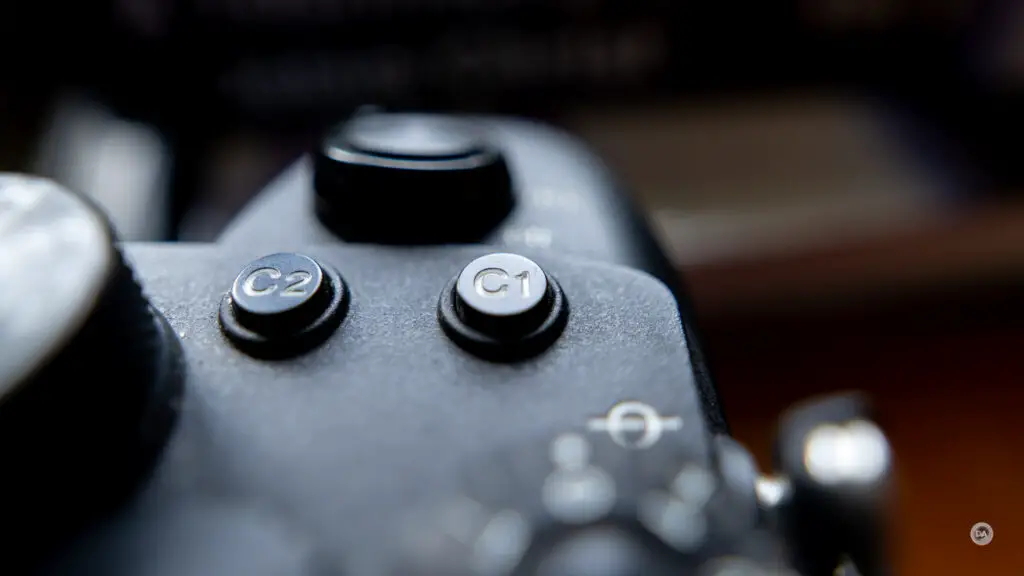
On area of deviation between the two Prima lenses is that the Prima 85mm has nine aperture blades with the 16mm had just seven. I actually like this move, as it reflects that wide angle lenses have different priorities than telephoto lenses. I would have liked the blade count to be just 5 blades on the 16mm, and would happily have taken 11 blades on this lens. 9 blades is the standard, however, and that’s true of the Sony and Viltrox lenses as well. The priority for this lens isn’t sunstars but rather retaining a nice circular shape when the lens is stopped down.
Unfortunately geometry is only okay, with a normal amount of cat-eye shape towards the edges of the frame wide open. More disappointing is the geometry as you stop the lens down, which never really achieves nice round specular highlights across the frame. Here is F1.8, F2.8, and F4:
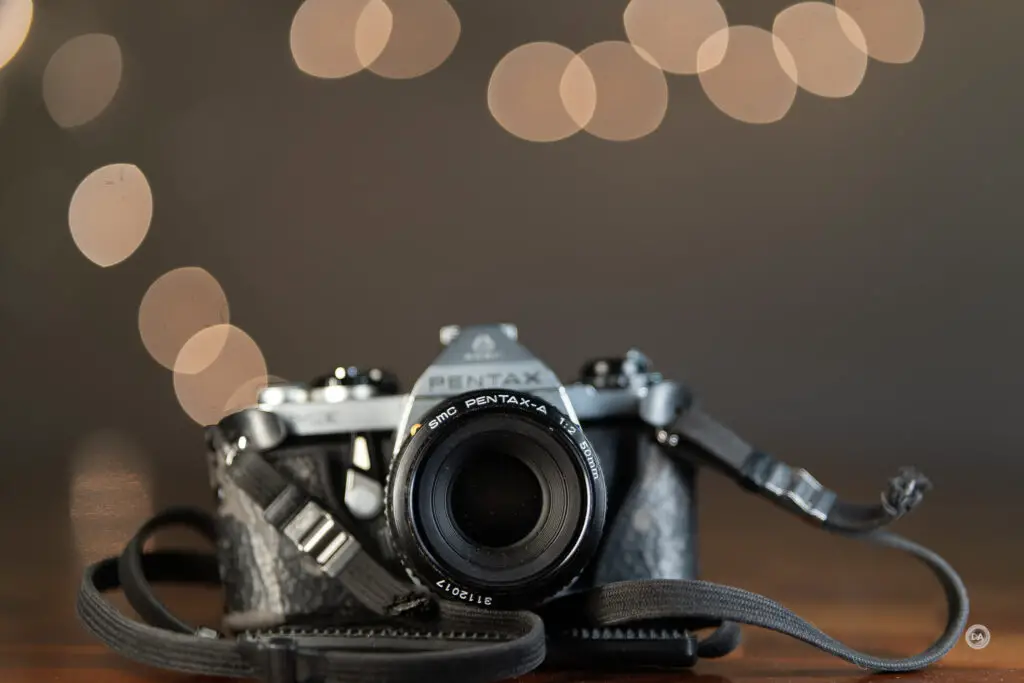
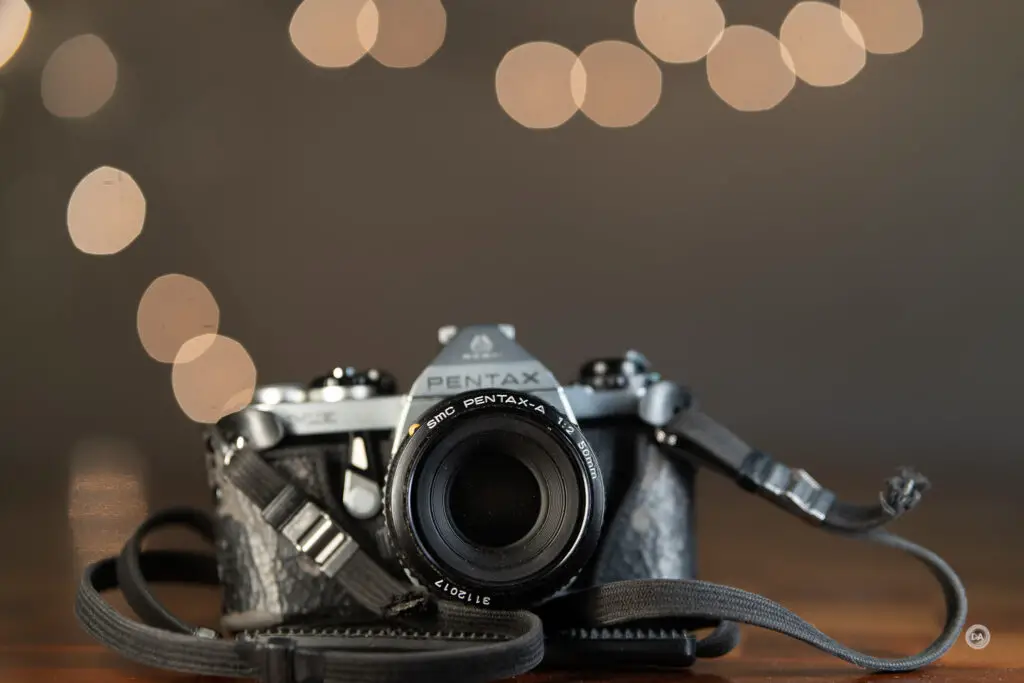

In summation, there is nothing groundbreaking about the build or design here, but I do think these are clean, attractive lenses that stand out as being nicely compact. The initial reaction on some forums to the announcement of this lens was largely a collective yawn, but I think that is underselling the value of a small, compact, lightweight lens with an 85mm focal length and a reasonable price. This is a pretty sweet little lens.
Autofocus for Stills
LK Samyang utilizes a Linear STM motor in this lens, and my experience with this focus motor is positive. It probably can’t quite match the dual Linear motors in the more expensive Sony 85mm F1.8, but seems better than most of the other third party competitors that tend to rely on just STM focus motors. Focus is fast, quiet, and accurate. This quick snap shot of a rooster shows great focus accuracy.
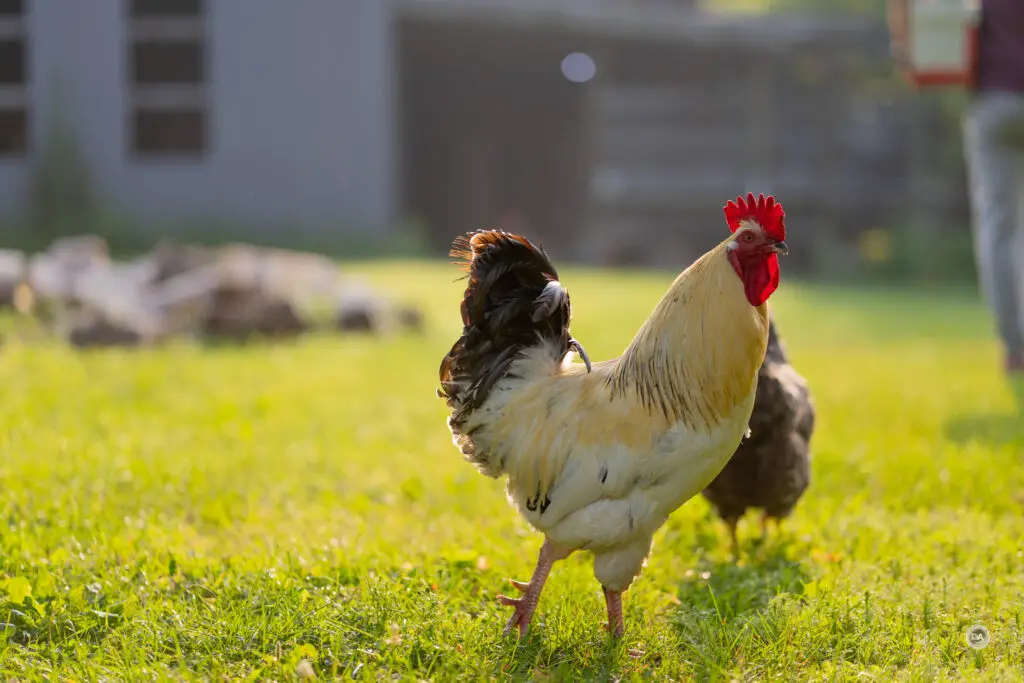
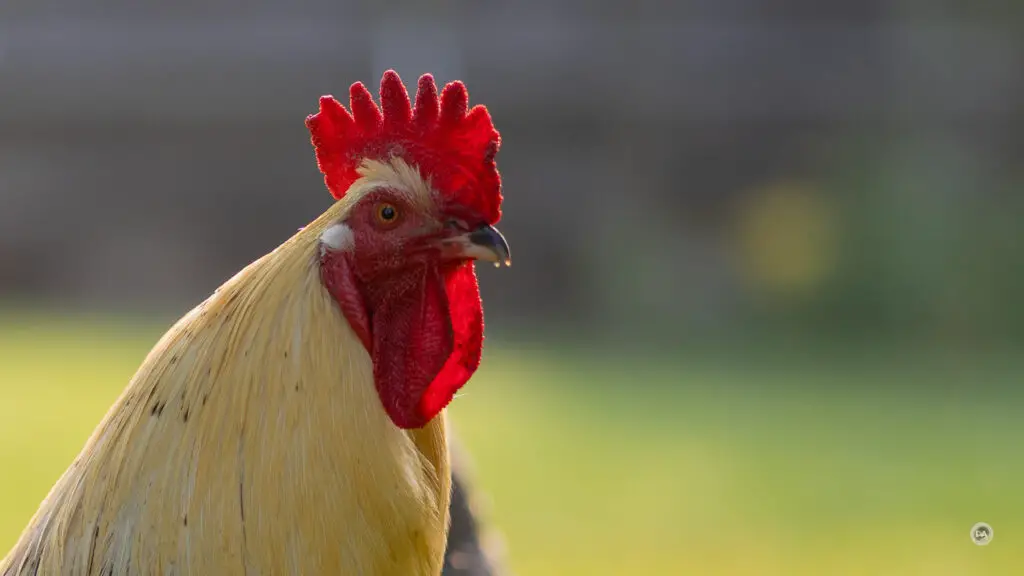
Speed in my formal autofocus tests was not quite as instant at the Prima 16mm, but that stands to reason as the optical elements in that lens would be smaller. Focus speed was still very quick, however, and while I always recommend buying first party Sony lenses if your priority is shooting sports, everyone else will certainly be happy with the focus performance here.
I used the lens in a church setting and got accurate autofocus results and quick focus acquisition.

I also got great focus from a quick shot of some wild turkeys in my yard. I had to shoot fast, as they were watching me approach and started to spook as I got closer.
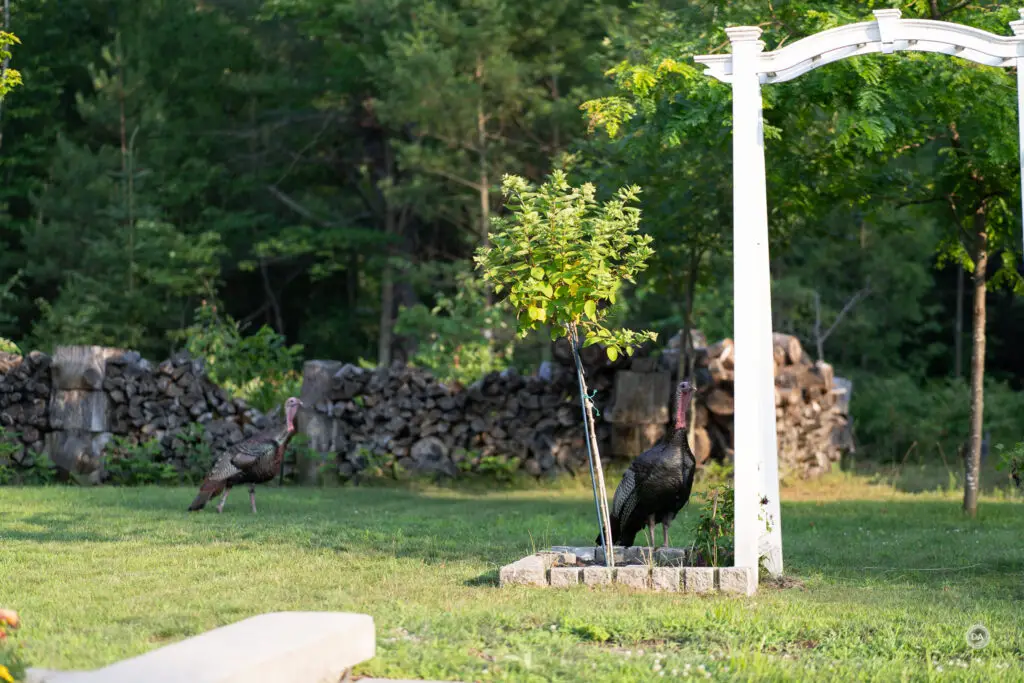
Shooting fine subjects also went well, with very good focus precision on things like wildflowers.

It is worth noting that recent LK Samyang lenses work extremely well on Nikon Z as well using an adapter like the Megadap ETZ21 Pro. The Prima 85mm feels very close to a native lens on Nikon, making it an attractive option for those who own both platforms. Here’s a few shots taken on my Nikon Z8 with the lens.
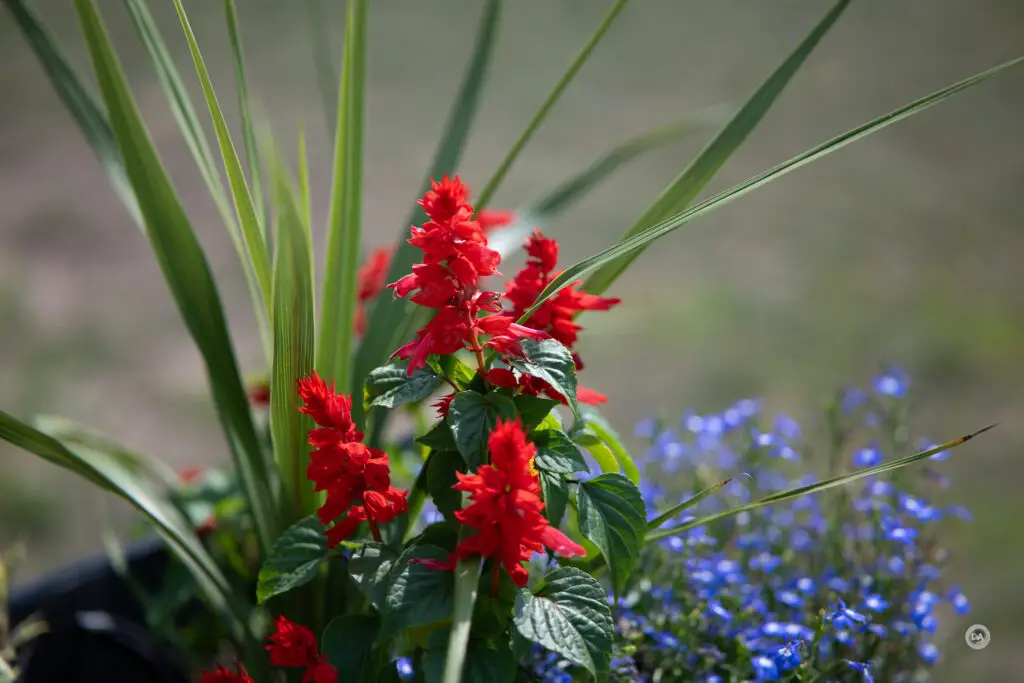

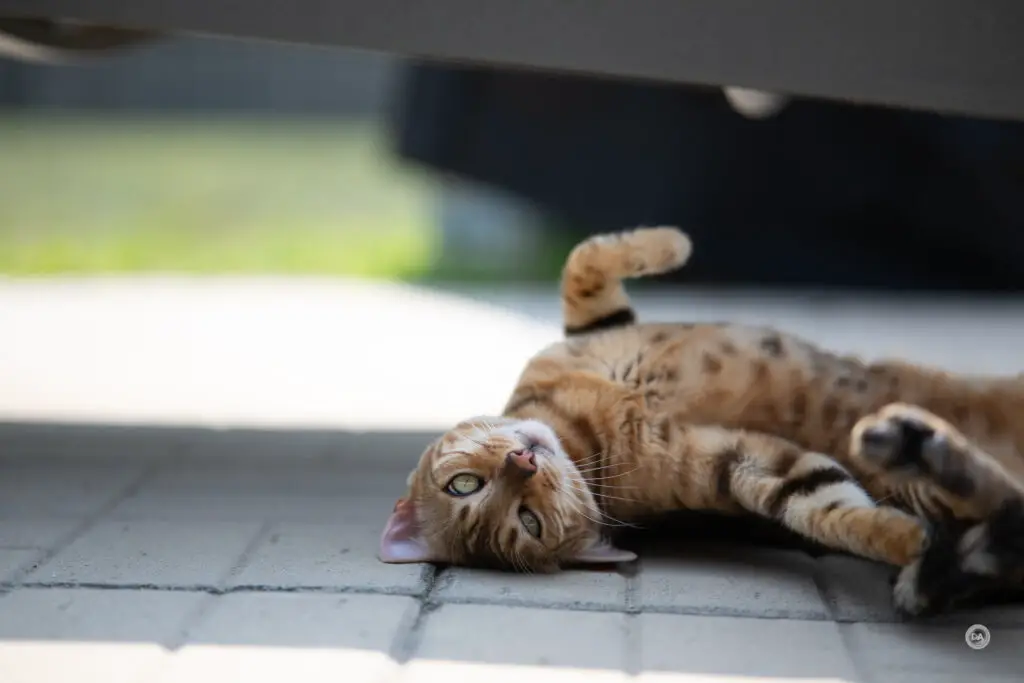
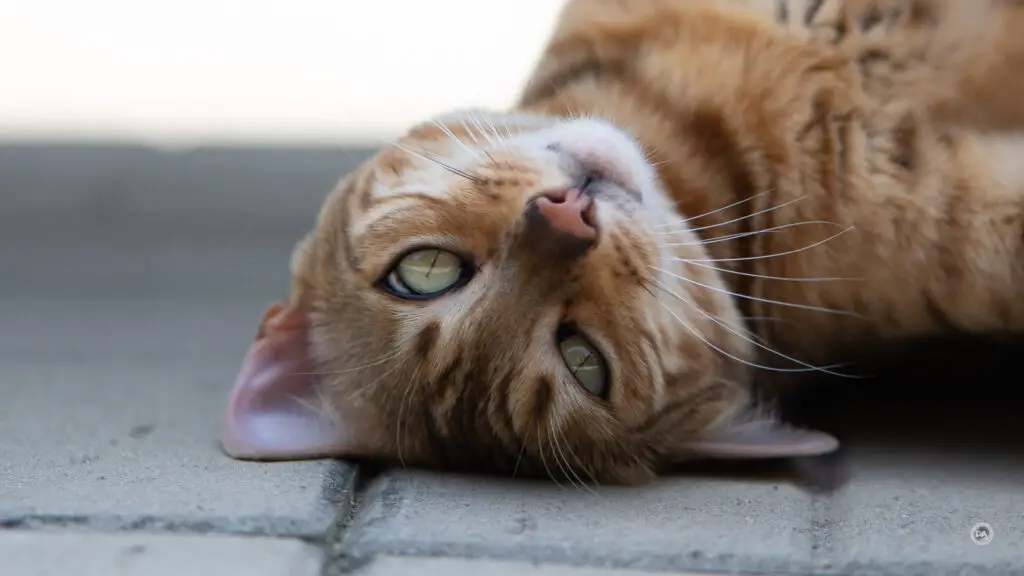
Focus for stills is competitively good. This is definitely better than what we saw with lenses like the Tiny series.
Video AF
Video AF is mostly good. Big focus pulls are damped rather than just jumping from one subject to another, and there are not any visible steps, no pulsing, and focus locked accurately on my subjects. On the negative side, however, focus breathing is strongly pronounced, with objects obviously changing size depending on where focus is located.
My hand test (where I alternately block the camera’s view of my face and then remove it) was only okay. The obvious focus breathing does negatively impact the cinematic feel of the pulls, and reactiveness is slow enough that I would have to speed it up in camera to get the result I was looking.
Static shots were nice and stable. I shot on clip of tall, blowing grasses, and focus didn’t move from the initial target even as the grasses swayed. Here’s a screen shot of that clip:
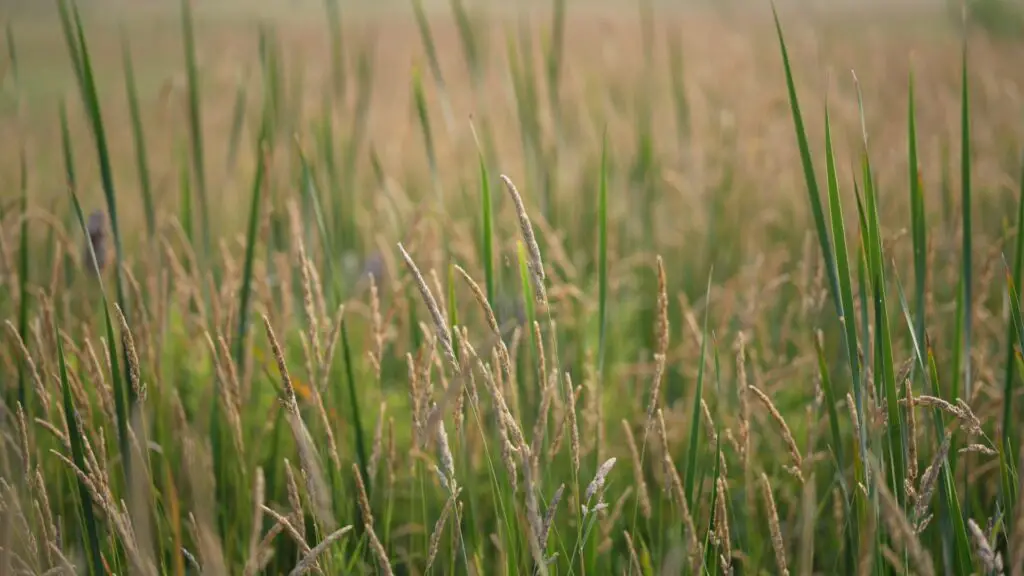
Natural focus changes while moving are smoothly damped, though the focus motor isn’t always as reactive Natural focus changes while moving are mostly smooth and cinematic, though the focus breathing will become obvious if the focus change is significant. I would also recommend increasing the reactiveness in camera if you have it set near the default settings.
This lens is obviously small and light enough to use on APS-C/Super35 as well, where it will give a roughly 128mm angle of view if you want tighter framing.
In general, video focus is good, though the focus breathing could be an issue for some.
Image Quality Breakdown
While this is not one the lenses to come out of the partnership with Schneider-Kreuznach, the LK Samyang AF 85mm F1.8 P has largely beautiful optics.

The Prima 85mm has a similar optical design to the Sony, with 9 elements in 8 groups. This includes 1 HR (High Refractive) and 3 ED (Extra Low Dispersion) elements.
The MTF charts shows both F1.8 (top) and F8 (bottom). At F1.8, the lens exhibits good sharpness and contrast in the center of the frame, a midframe that is just as good, and a fairly steep drop in the corners. The F8 version shows extreme sharpness all across the frame on the sagittal plane, but a linear drop on the meridional plane. Expect a bit of astigmatism stopped down.
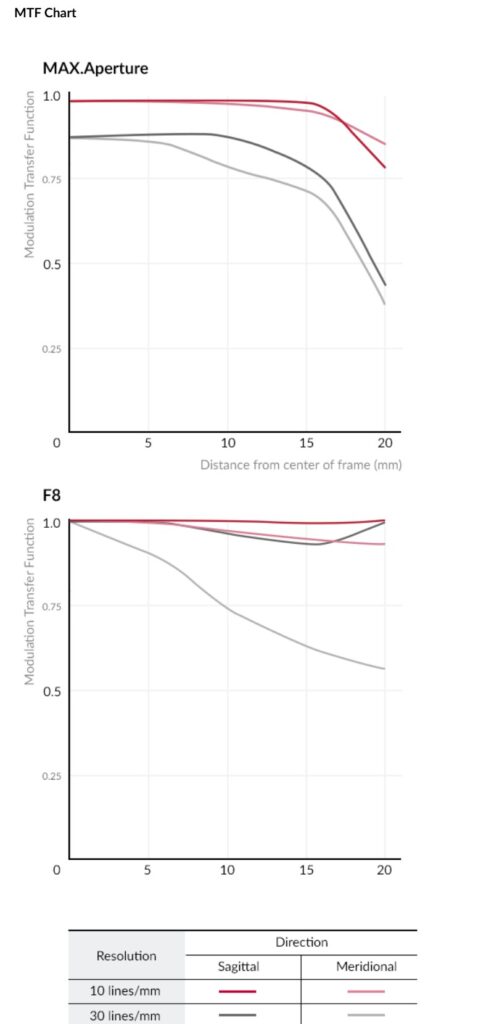
The sharpness profile of this lens is optimized at the right place, as typical compositions using the rule of thirds are treated to intensely good sharpness and contrast. Take a look at this close crop of a shot of a rooster – that detail at F1.8 is impressive!
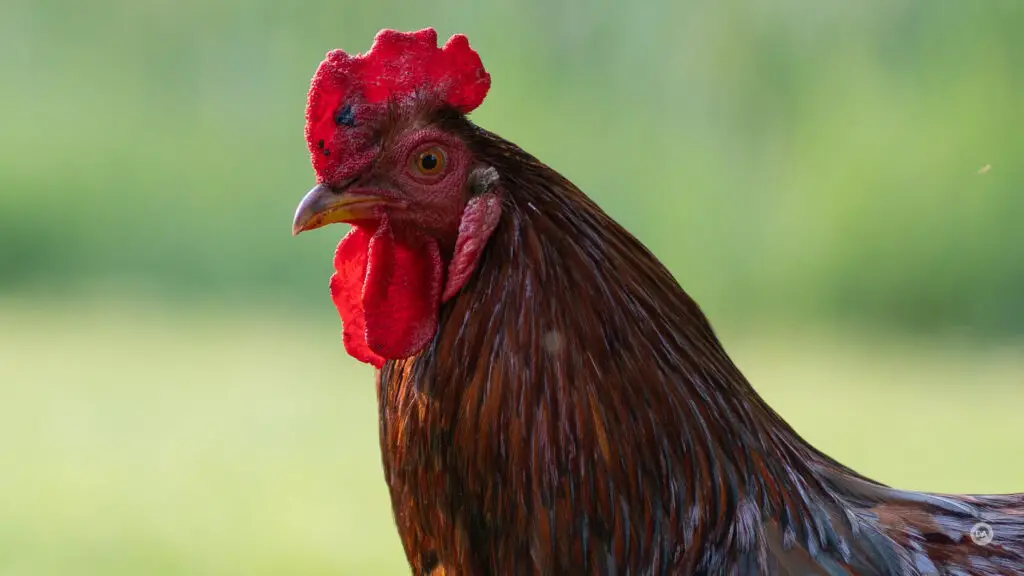
85mm lenses tend to be quite good optically, so the Prima 85mm needs to be strong to be competitive in this market. Let’s dive into the details.
Neither distortion or vignette are big deals here.
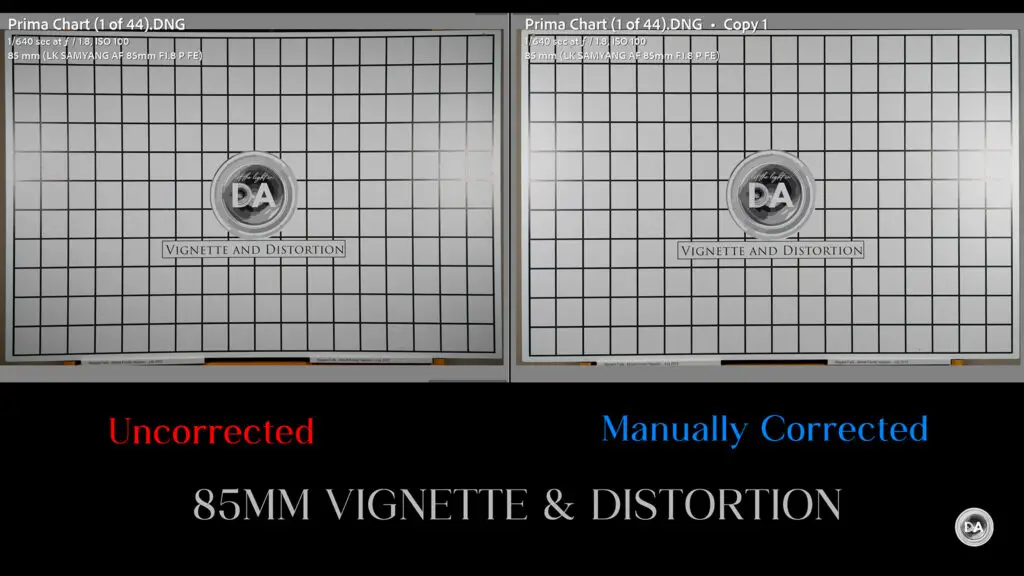
There is some minimal pincushion distortion that required a -4 to correct. It is very linear and corrects easily. I’ve seen much worse on 85mm lenses. Vignette is only moderate, requiring a +48 to correct (less than two stops). Again, not a big deal. When shooting portraits, you would actually get nicer results using no corrections, as a bit of pincushion distortion is flattering, as is a bit of vignette.
There are in-camera corrections for JPEGs and Video and a correction profile is available for RAW corrections in Lightroom/ACR.
In most situations I did not see an issue with longitudinal style chromatic aberrations (LoCA) which exhibit before and after the plane of focus at large apertures. My test chart presents cleanly:
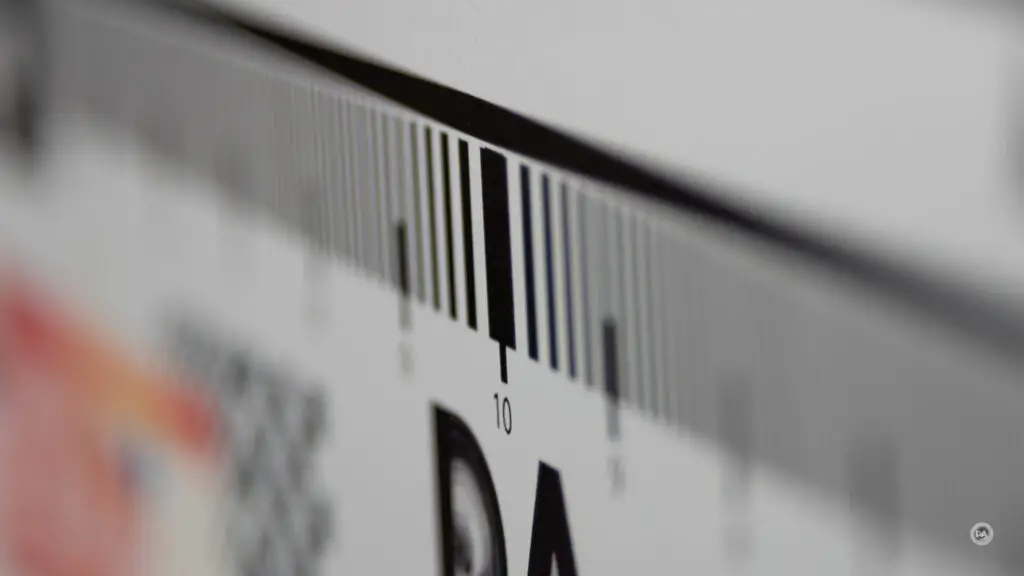
Likewise I saw minimal fringing when shooting my Dad’s old SLR that I use for a test.
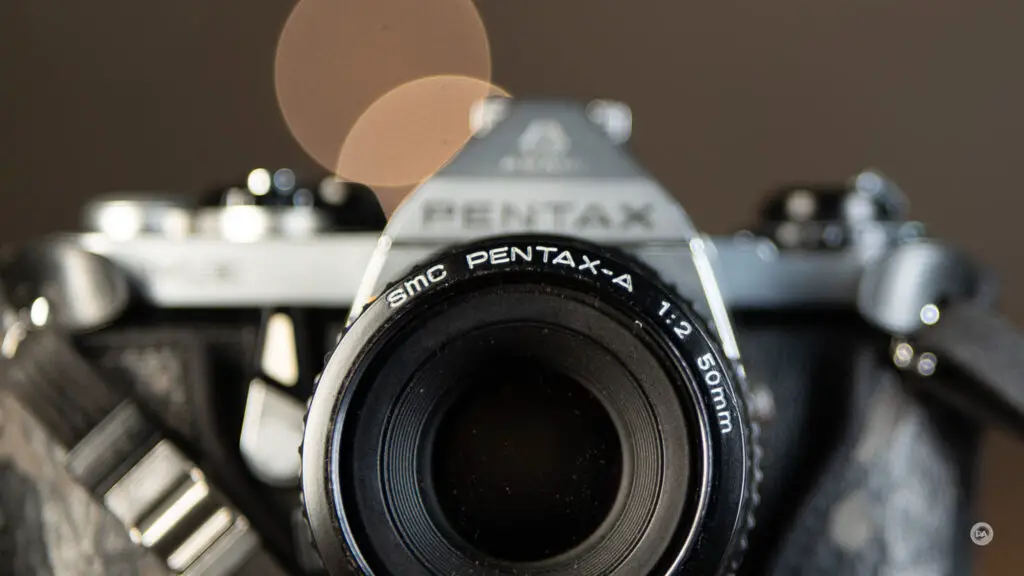
What I did see, however, was some fringing around high contrast areas like a window frame in out of focus areas.
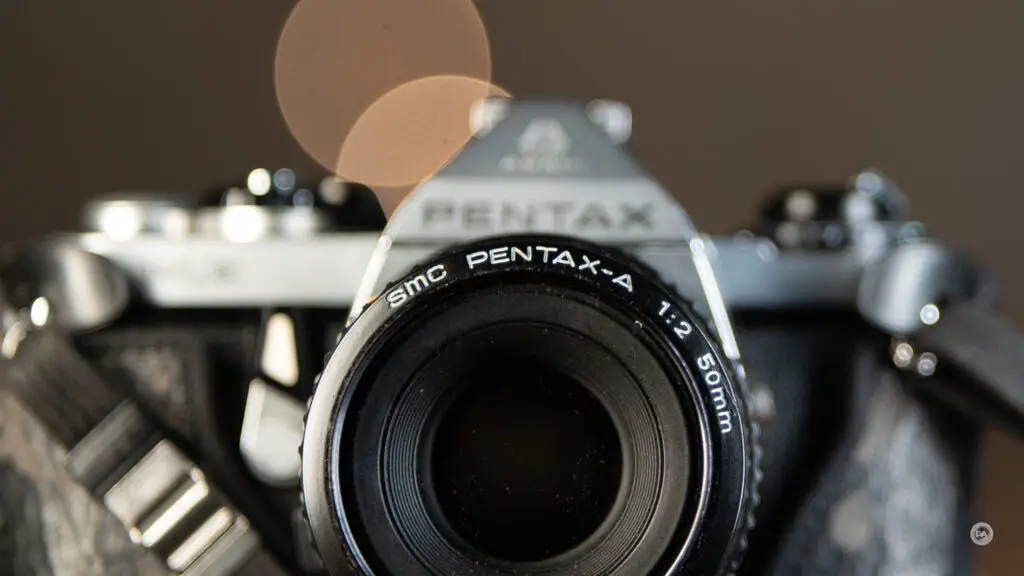
This can be fixed with “defringe” sliders in Lightroom or ACR, though it is an extra step.
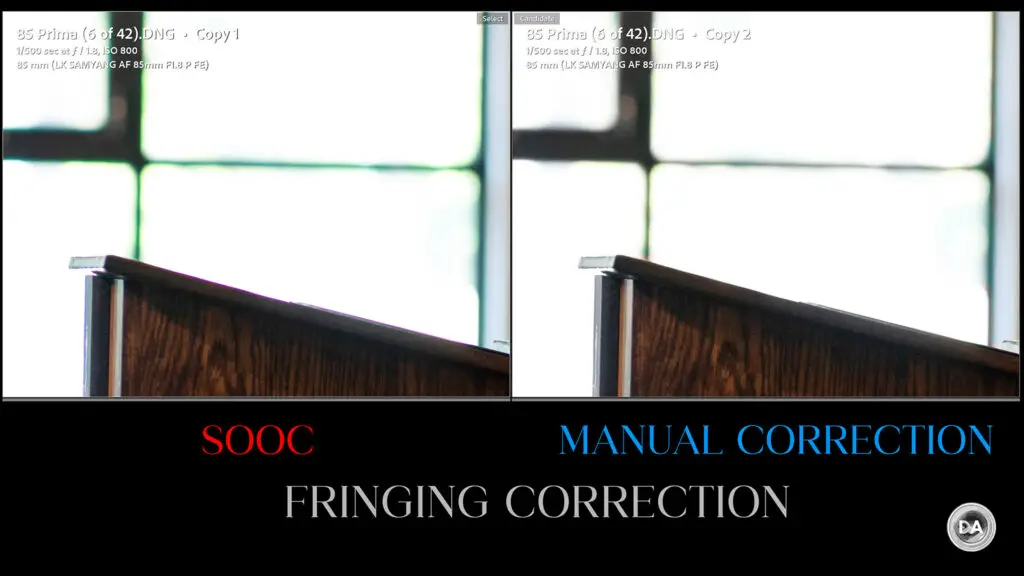
That was the only situation where I saw the fringing, however. There is no evidence of lateral style CA near the edge of the frame.
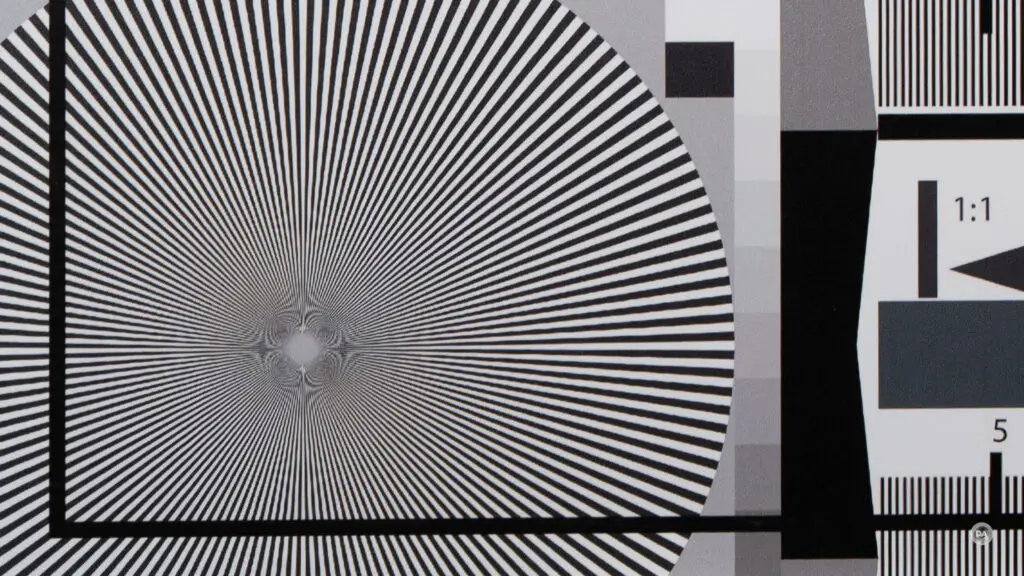
How about sharpness?
I’m using the 61MP Sony a7RV for these tests, which represents the highest resolution currently available on any full frame platform. I show the results at 200% magnification to really highlight any flaws.
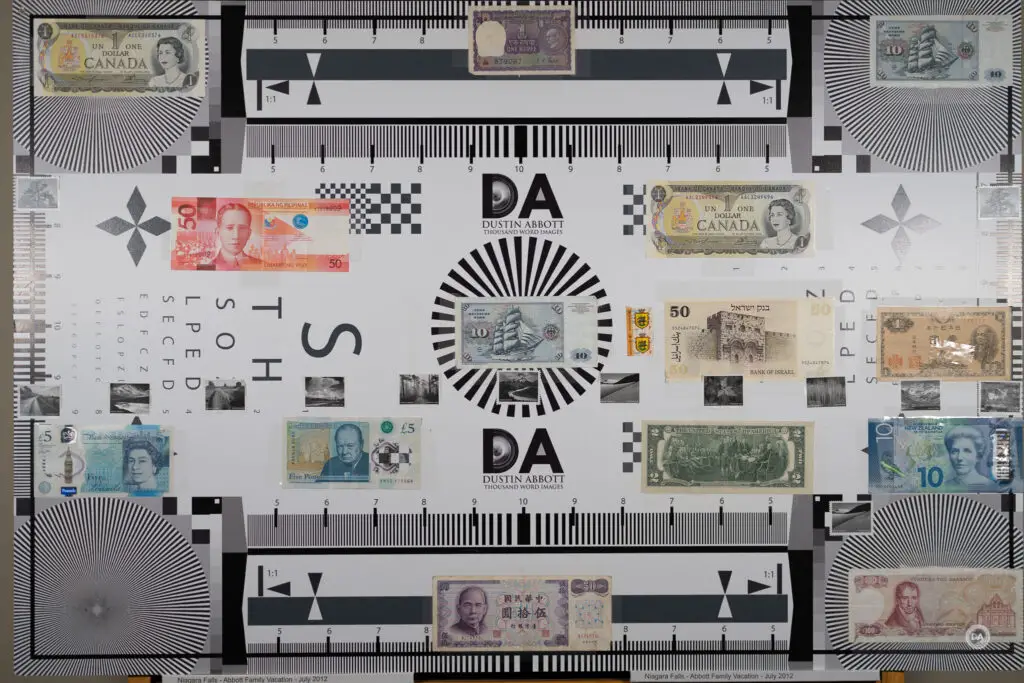
Here’s a look at the F1.8 crops from the center, midframe, and lower right corner.
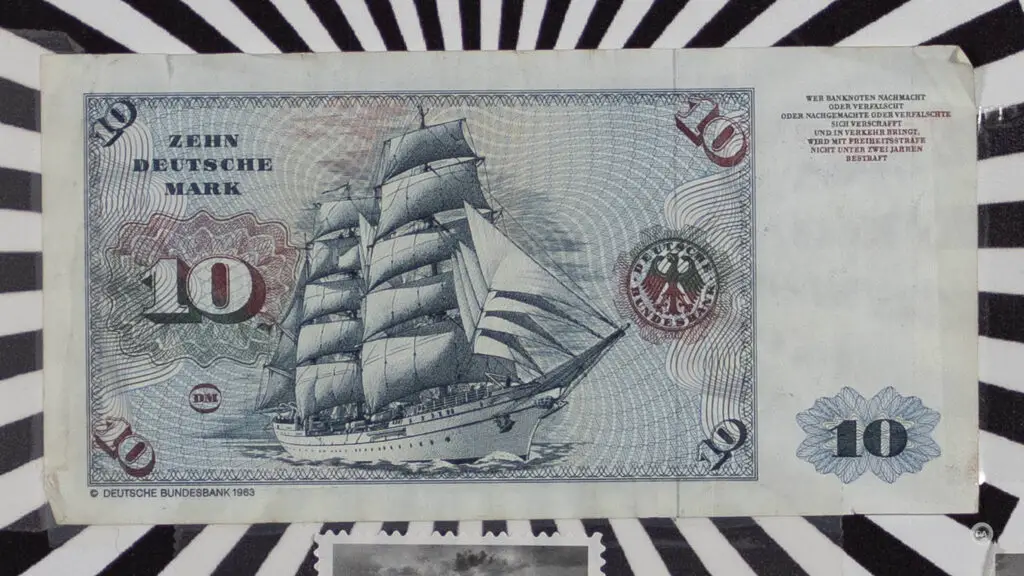

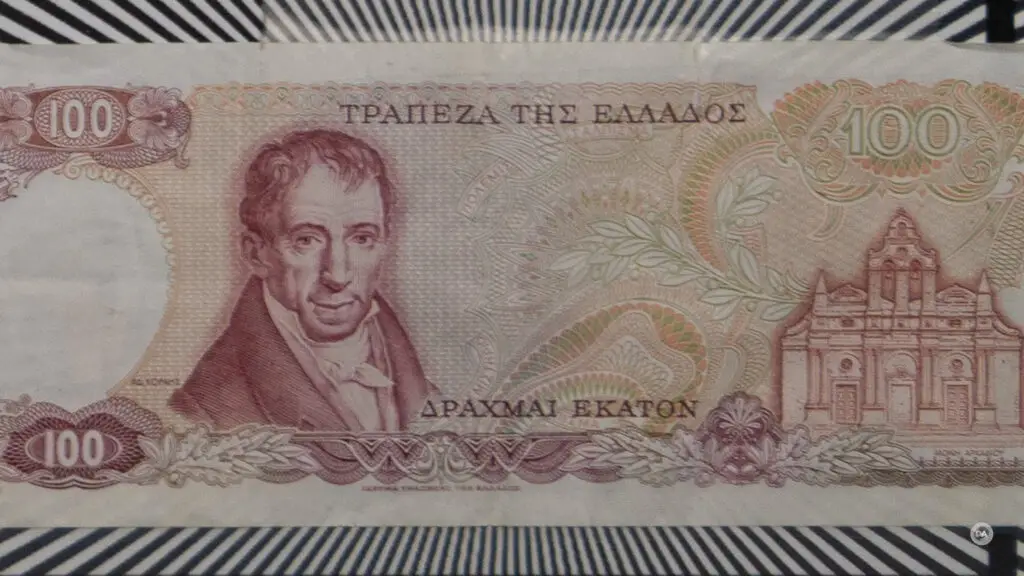
The center and midframe look excellent. I’ve seen higher contrast, but there is plenty there for pretty much any situation. What’s more, LK Samyang reports that this lens is optimized for portrait distances (2-3 meters), and at that distance detail and contrast are exceptional. Take a look at this F1.8 casual portrait shot using just available light.
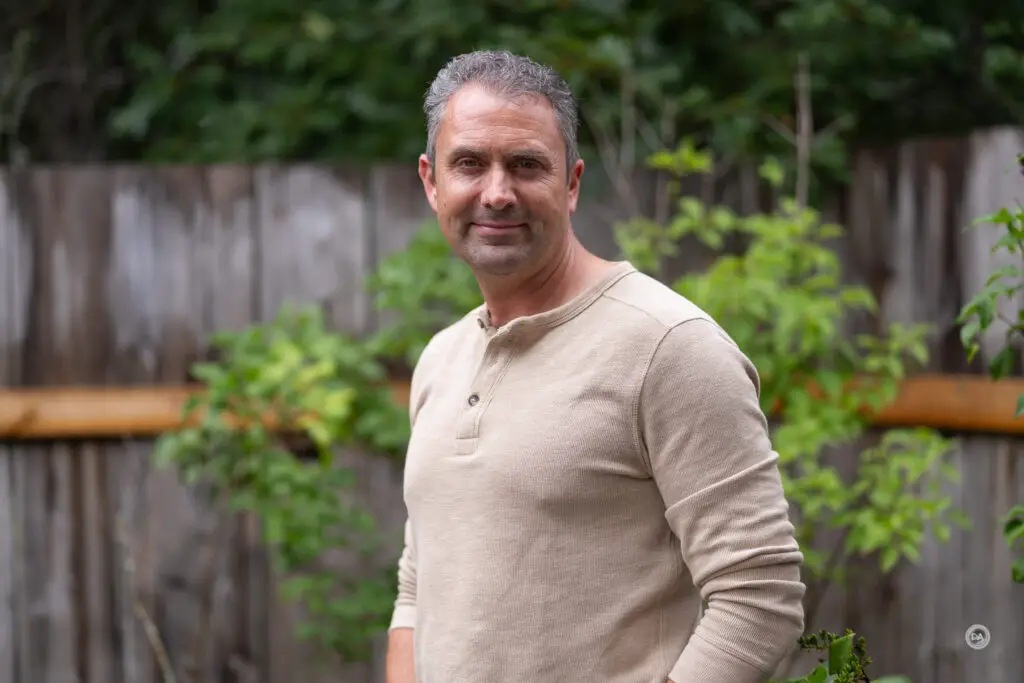
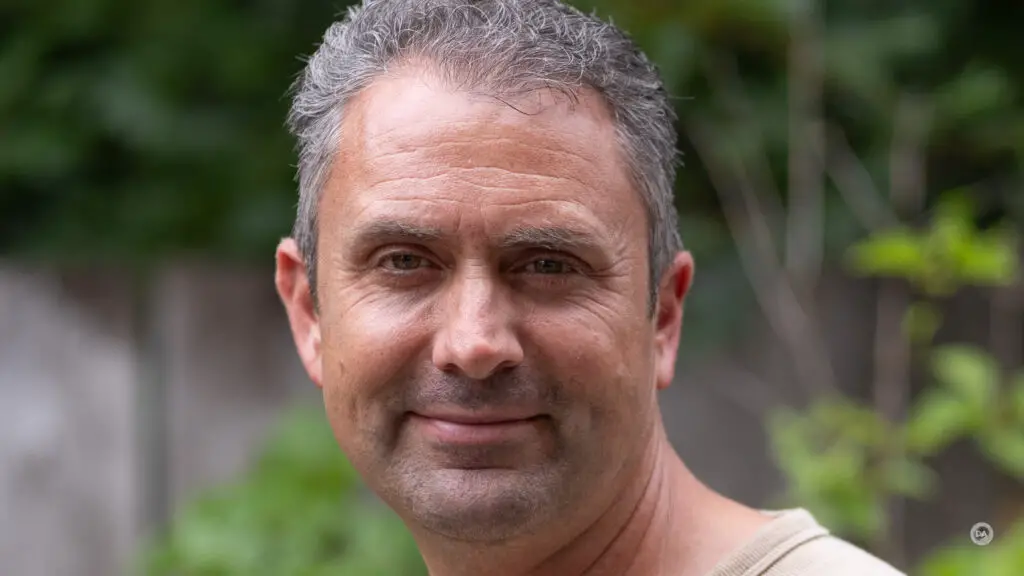
I doubt any subject would want higher detail than that, and this is on a 61MP sensor.
Even shooting a longer landscape shot at F1.8 shows great detail and contrast on the distant subject.
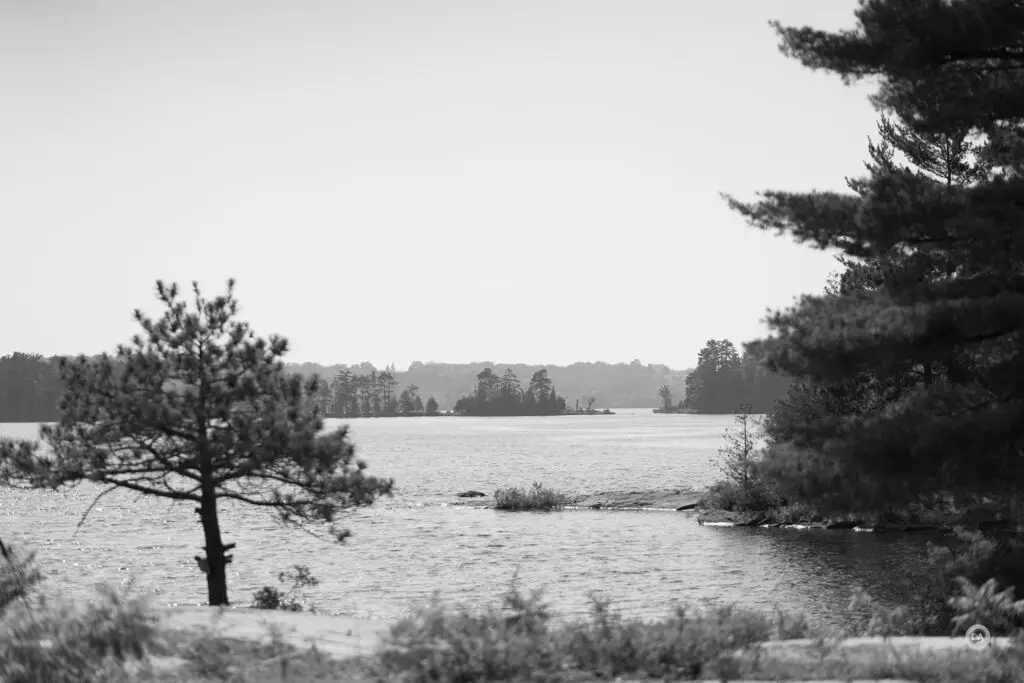
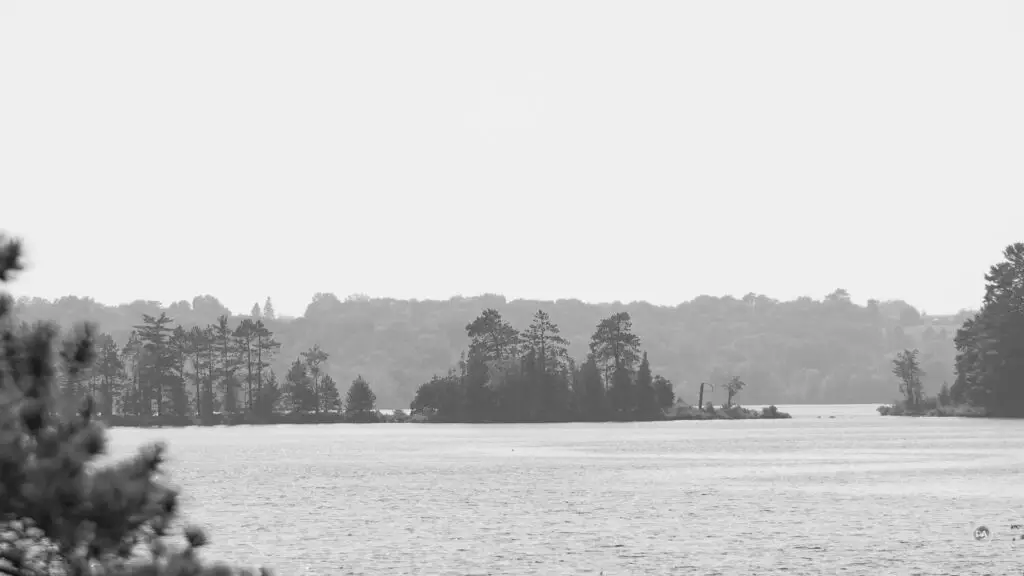
I think there is plenty of sharpness and contrast in the rule of thirds zone for all work. You can see that the wide open resolution and contrast doesn’t look much worse than F5.6 in the center of this real world shot.
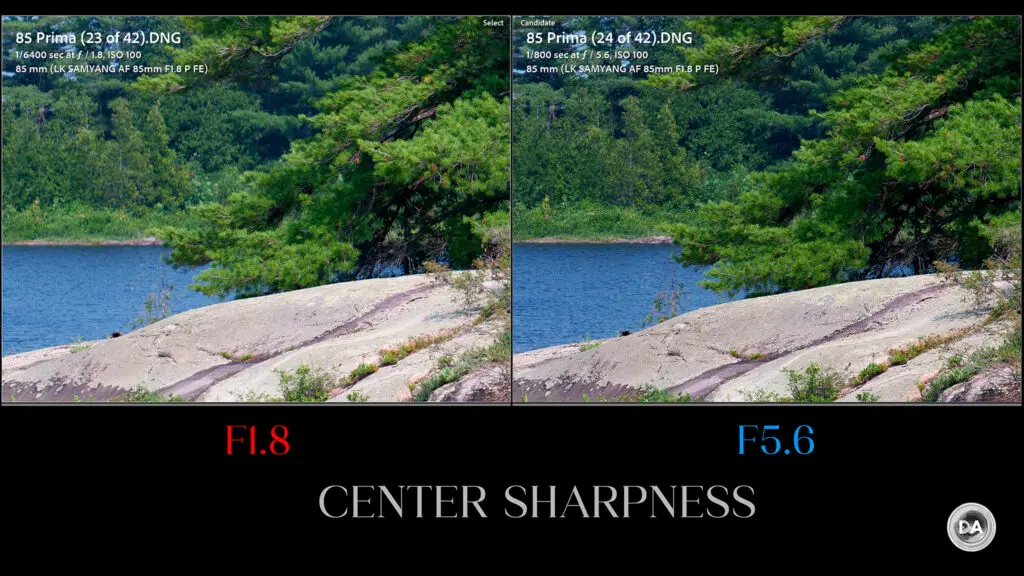
There’s a little more noticeable difference when you get out towards the edge of the frame.
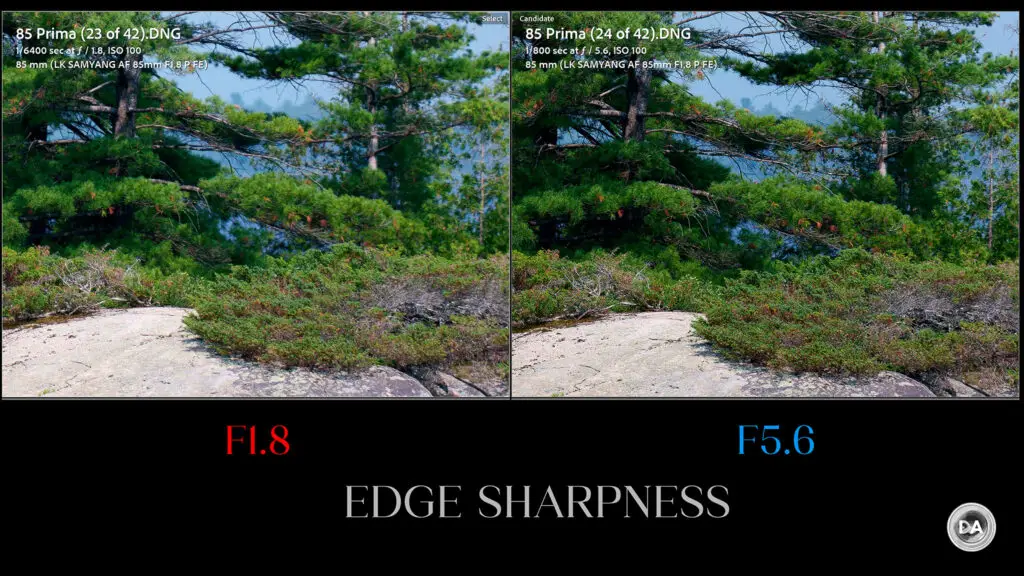
I didn’t really notice any significant improvement when stopping down on my chart tests. There is some contrast improvement, but I think a bit of focus shift must occur, as I didn’t perceive sharpness improvements when stopping down. I use the original focus and then stop down without refocusing. This exposes when focus shift occurs.
That’s not a problem in real world situations, as you are focusing for the shot, not repeating the same shot over and over at different apertures. This image at F6.3, for example, shows excellent (and consistent) sharpness all across the frame.
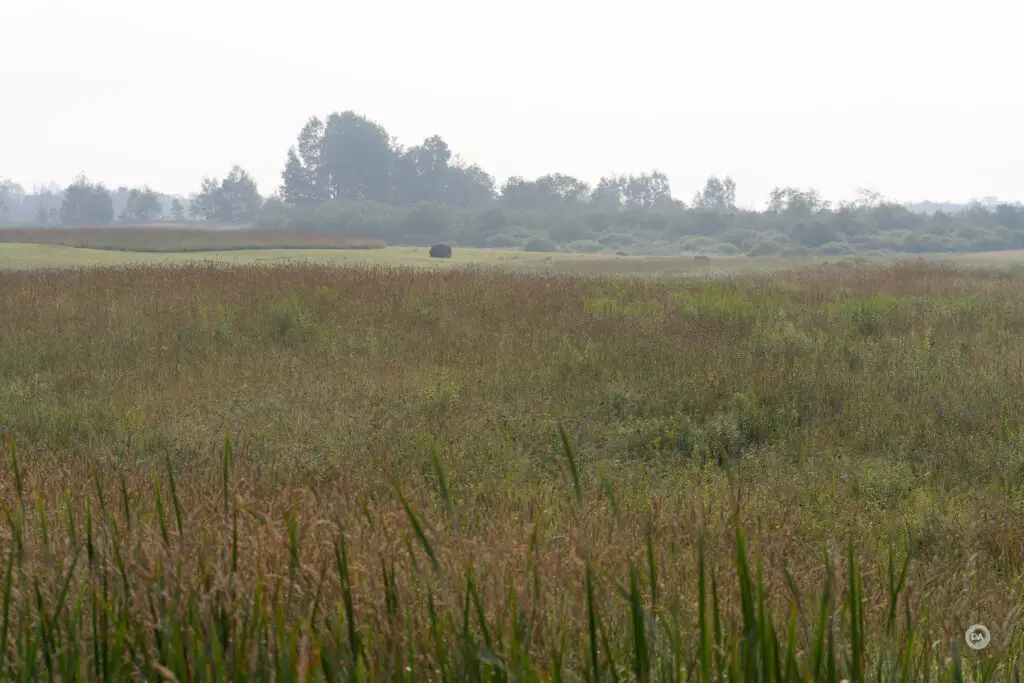
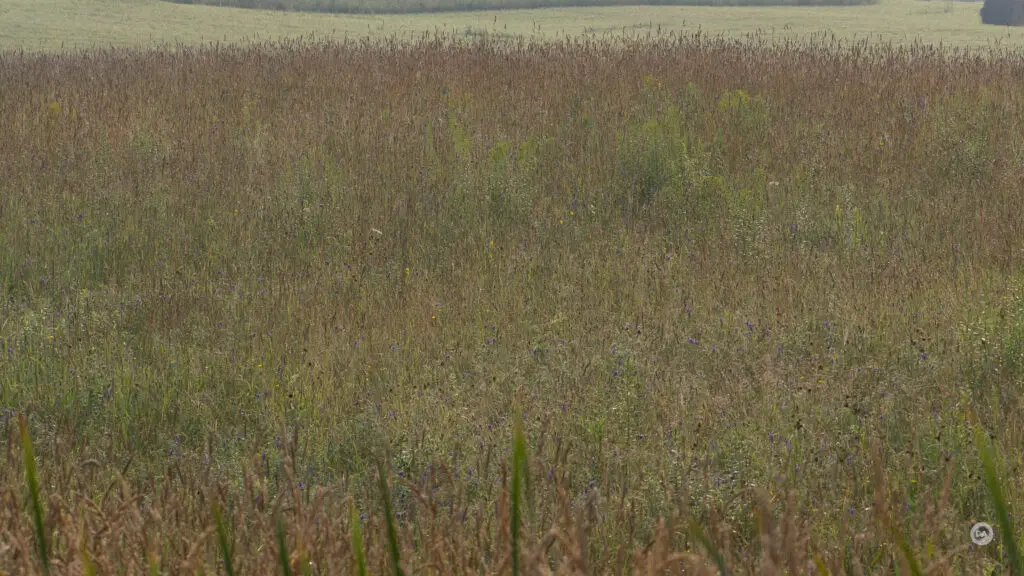
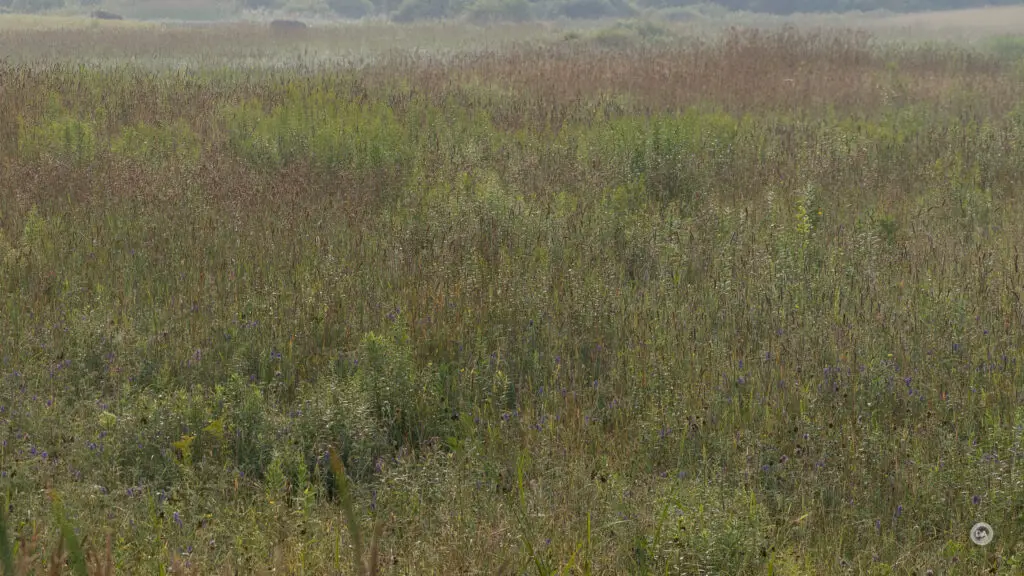
My takeaway from real world shots was to be generally impressed by excellent detail and contrast. I don’t want a “review specific” kind of scenario to give a false impression of the performance of this lens. I thought I could see some focus shift in Christopher Frost’s video review during his LoCA test portion. This may not a good lens for focus stacking, but it will be fine for ordinary photography and videography.
You’ll start to see softening from diffraction by F11. F22 is minimum aperture, and it looks fairly soft.
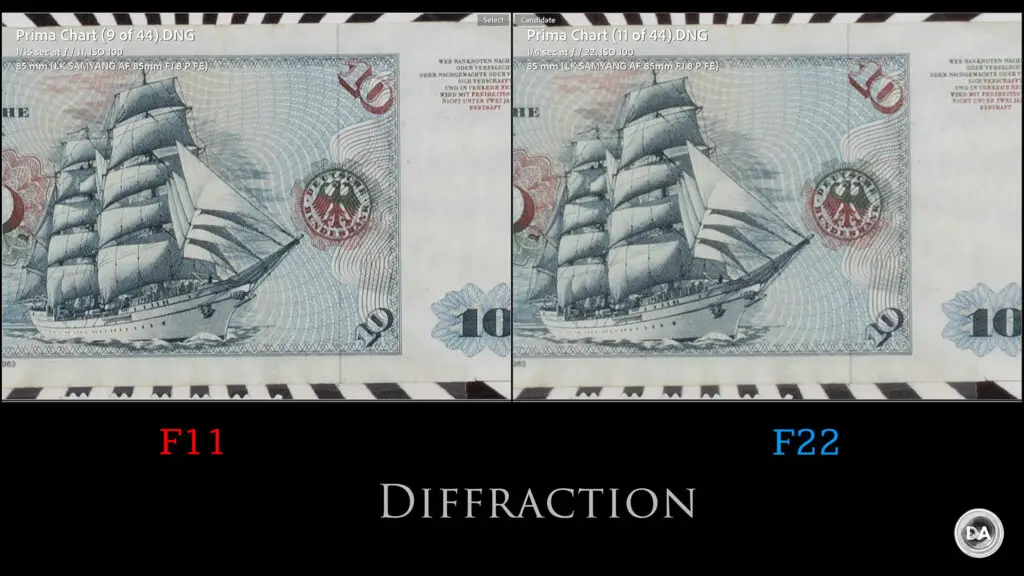
Flare resistance is interesting, as there are some flare related artifacts, though my opinion (particularly at large apertures) that they tend to very artistic and flattering. The final two images in the series show first F1.8 and then F11. I strongly prefer the look of the flare pattern at F1.8!
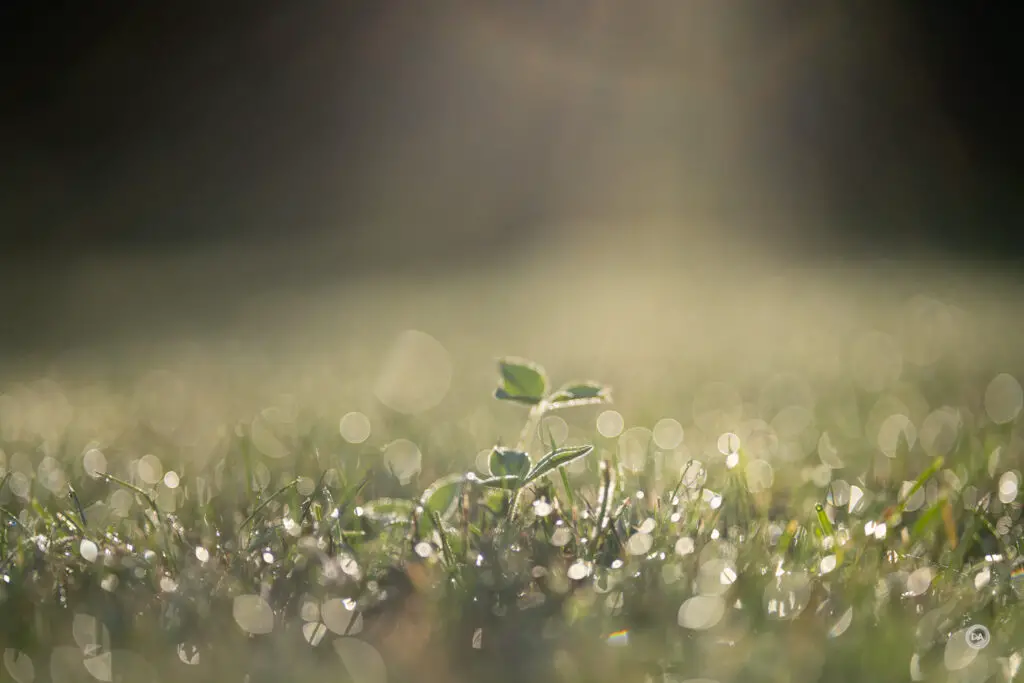
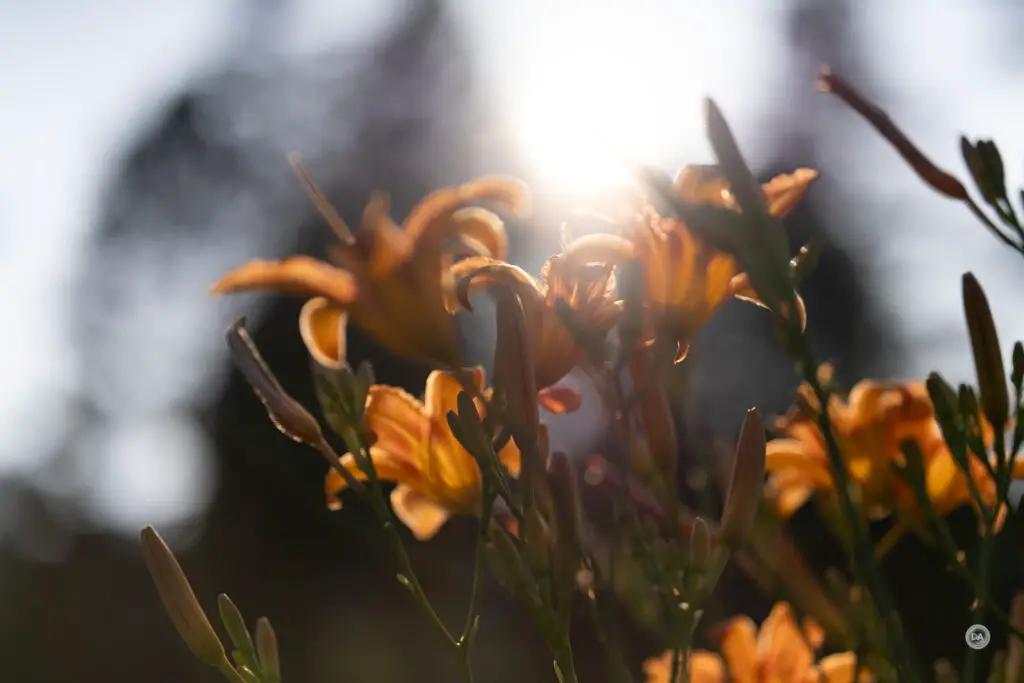
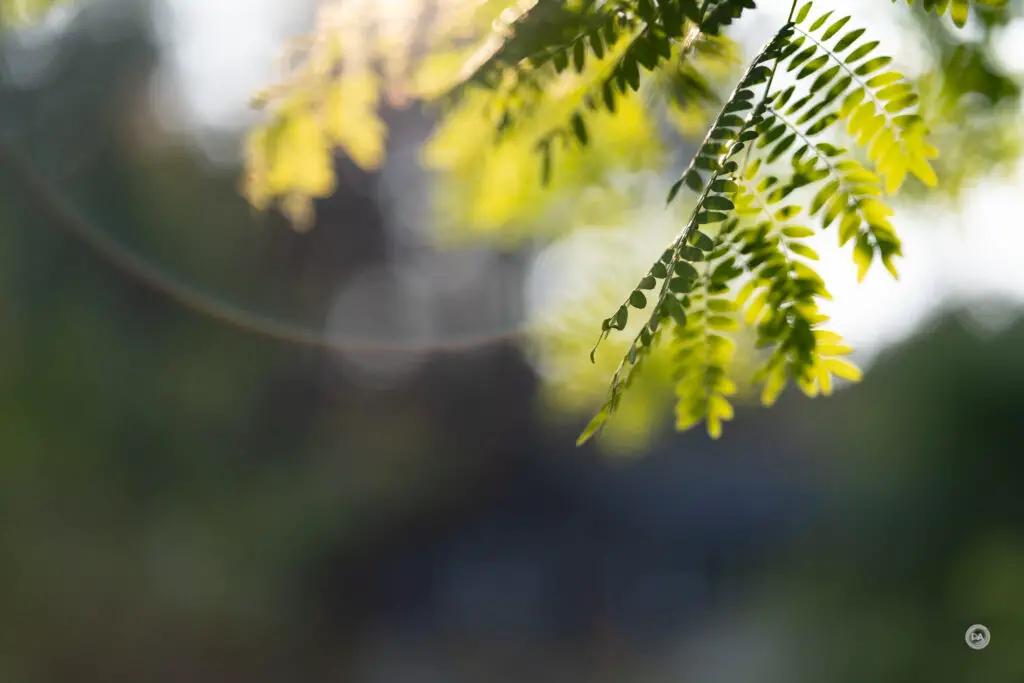
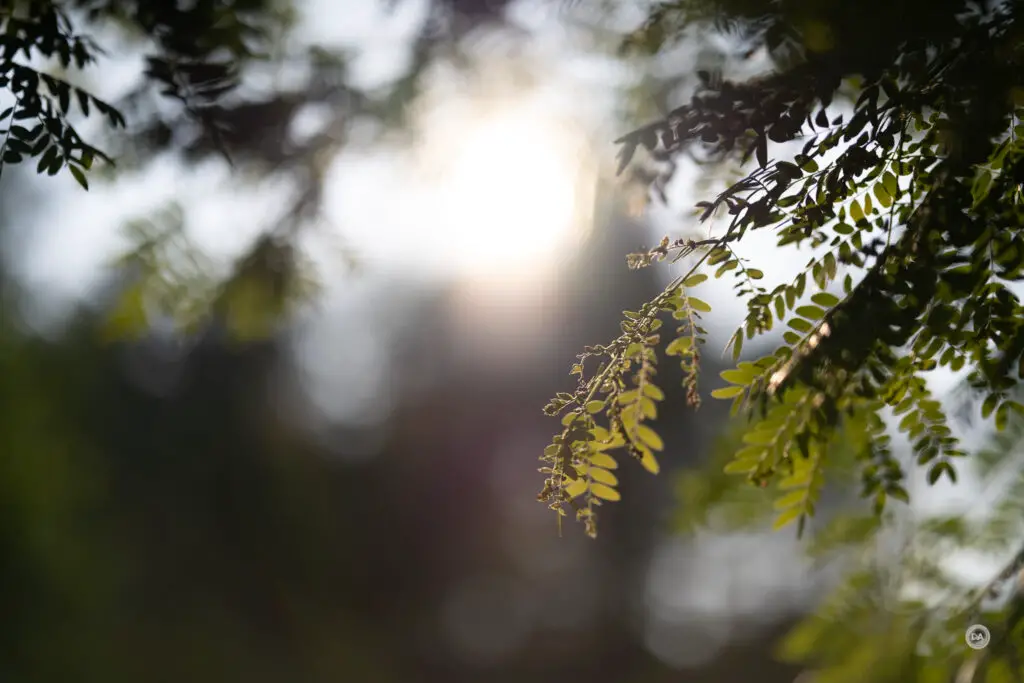
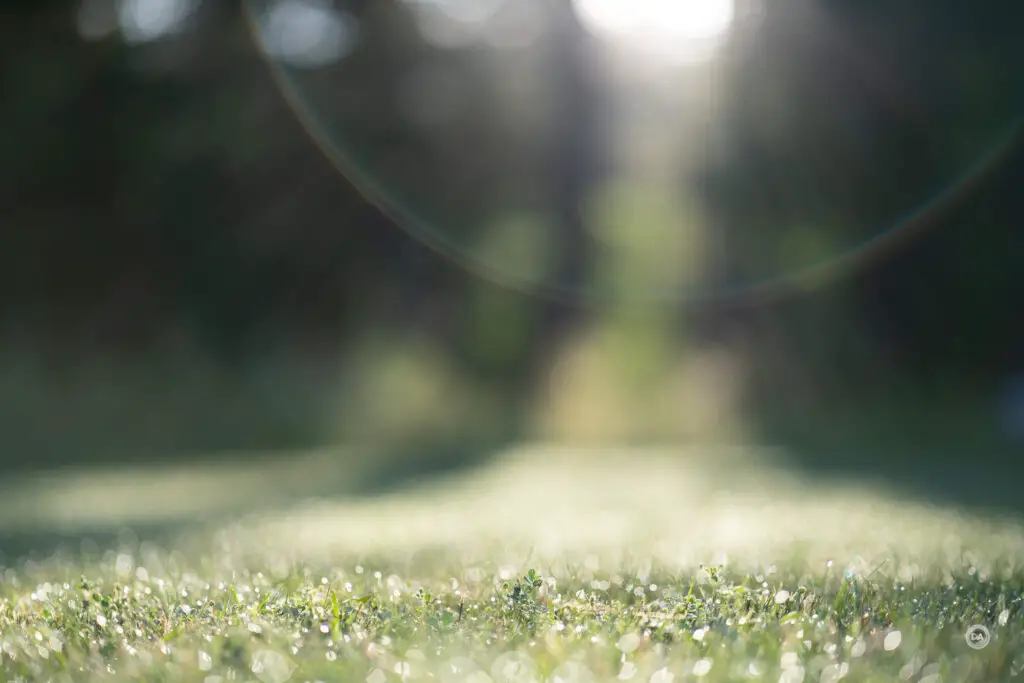
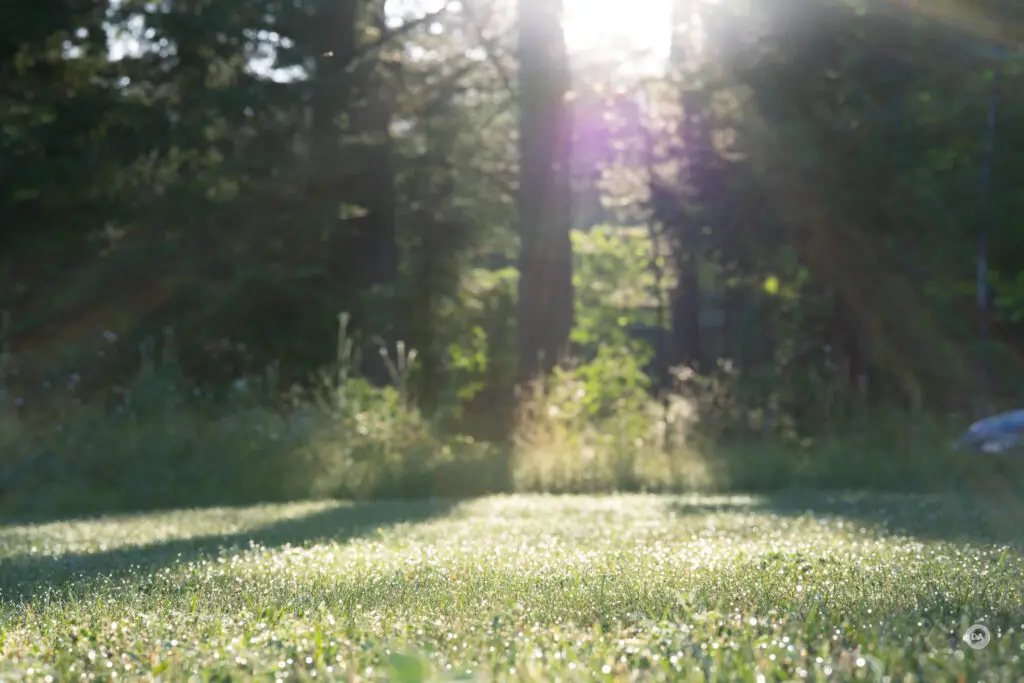
If you are looking for a completely flare resistant lens, then look elsewhere. If you feel like you could get some artistic value out of these flares, then this lens might be for you.
We have already seen the worst aspect of the bokeh performance, which is a less than desirable geometry with specular highlights. If we go back and take a closer look at those specular highlights, we’ll find a fairly clean interior, low fringing, and just a bit of inner outlining.
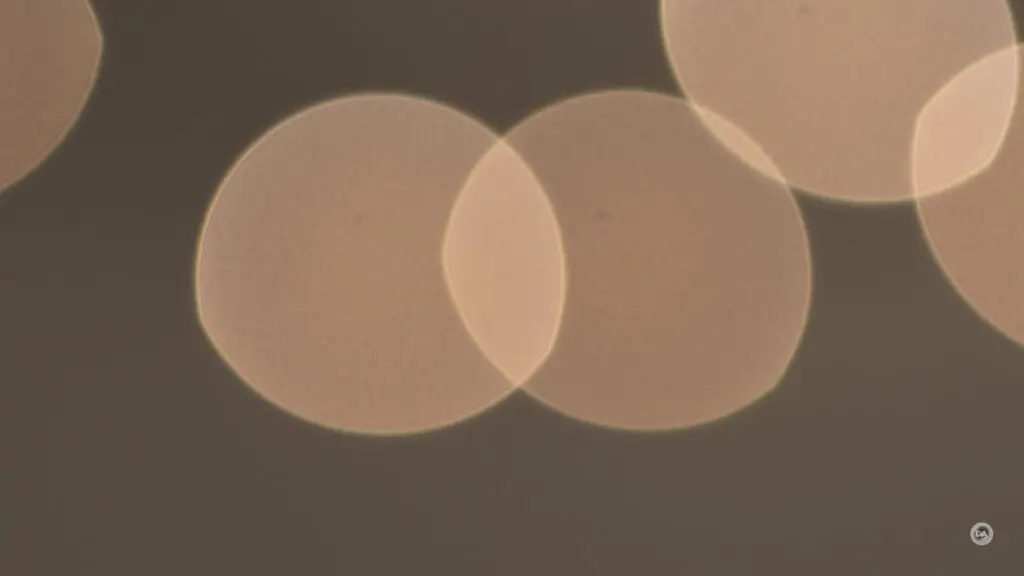
The best part of the bokeh rendering is found in how soft real-world backgrounds are. You see a very creamy background here:

This shot looks gorgeous to me, as while the background can be faintly discerned (you know what you’re looking at with the distant grasses, trees, and farmhouse), but it is rendered like an watercolor painting. That is helped by a bit of haze that day, but I love the wonderful contrast between the crisp foreground and the soft background.
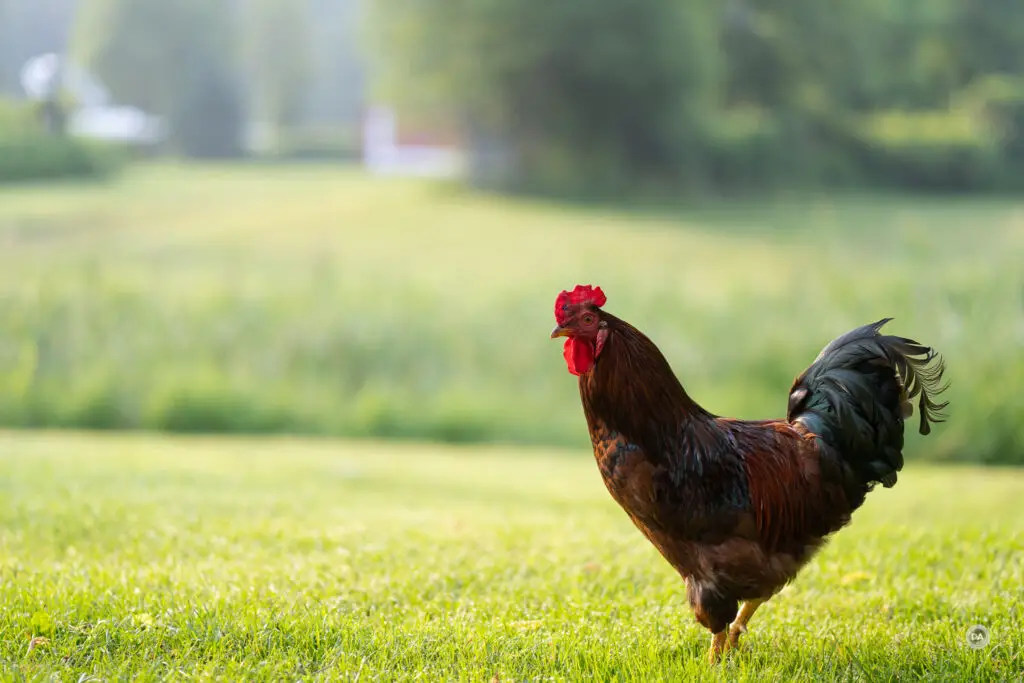
This shot of picking blackberries also looks great.
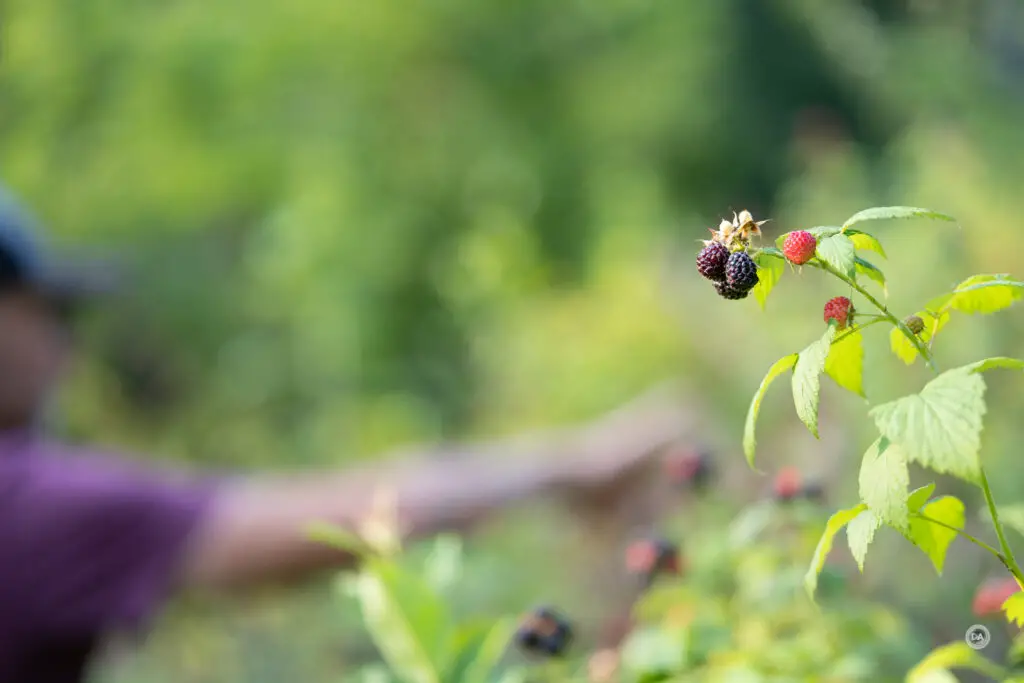
Even less advantageous shots where the background is fairly close look good to me.
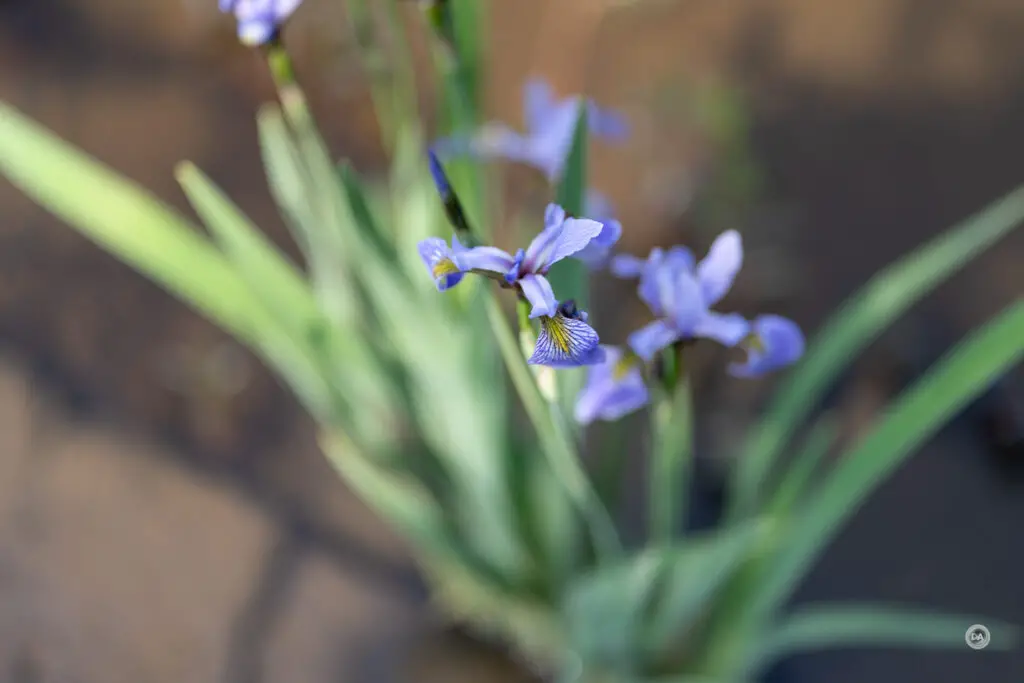
I find Samyang colors often slightly warm, which looks great in many shots but can mean that they are less of a perfect match for lenses from other brands.

I generally found the colors to be pleasing in my shots. Here’s a final mini gallery for you to enjoy.
Conclusion
There are a TON of 85mm options on Sony FE at this point, and that remains the greatest challenge for the LK Samyang AF 85mm F1.8 P FE. Why should you choose it over the dozens of other options? The single biggest reason to choose Prima 85mm is the compact size and weight. I can’t think of a better 85mm optically that comes in this small of a package. I love big 85mm F1.2/F1.4 lenses, but they are often big, heavy, and expensive (particularly the F1.2 variants). And, to be blunt, many (most?) photographers don’t need that kind of lens. An 85mm F1.8 would work just fine for them, and still produce gorgeous images.
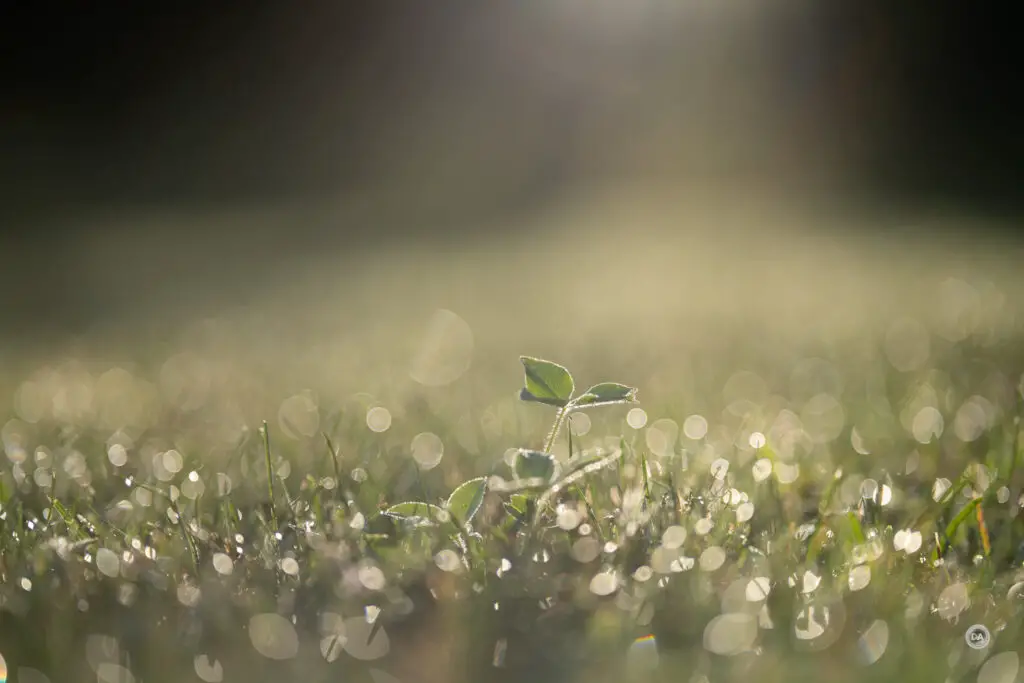
And that’s where the Prima 85mm makes sense. It is far more likely to go into your bag than a bigger, heavier lens. I can see myself throwing this lens into my bag for a trip on the off chance I do some portraits where I might leave a bigger F1.4 lens at home. That’s a true benefit, as the best camera (or lens) is the one you have with you.
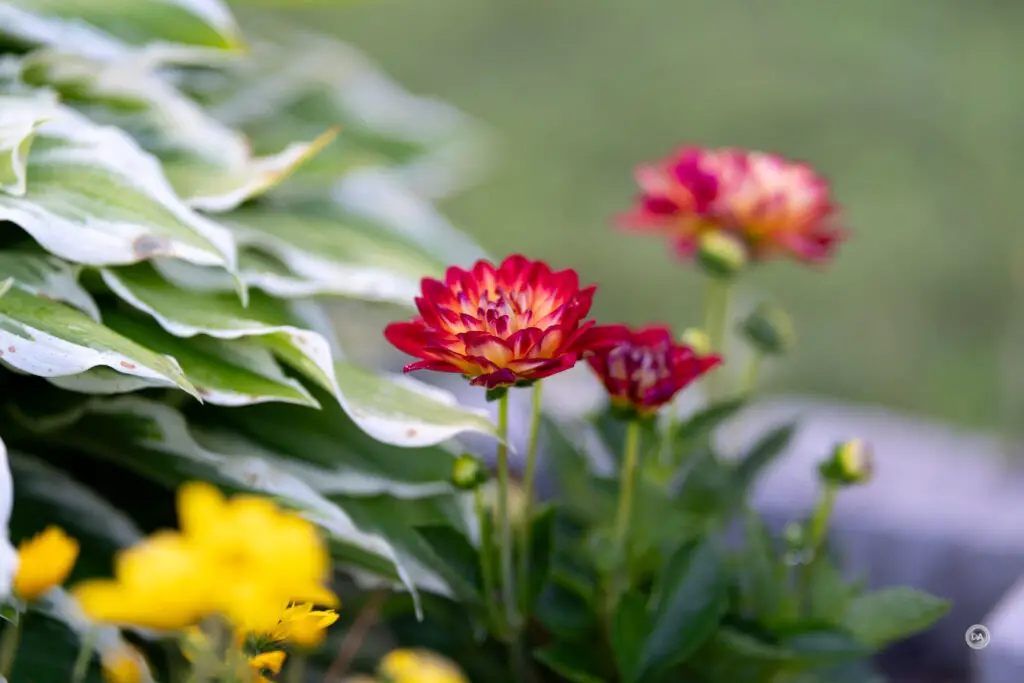
There are cheaper 85mm lenses, but I don’t think there are cheaper 85mm lenses that outperform this one, particularly if size and weight matter to you at all. The price of $399 USD feels like solid value for money when compared to the performance. I really liked the LK Samyang 85mm F1.8 Prima, and I hope they can carve out a little market share with it. It might help if they can bring it to Nikon Z mount, where it would provide a very interesting counterpoint to the bigger, heavier, and much more expensive 85mm F1.8 S. Make it happen, LK Samyang!
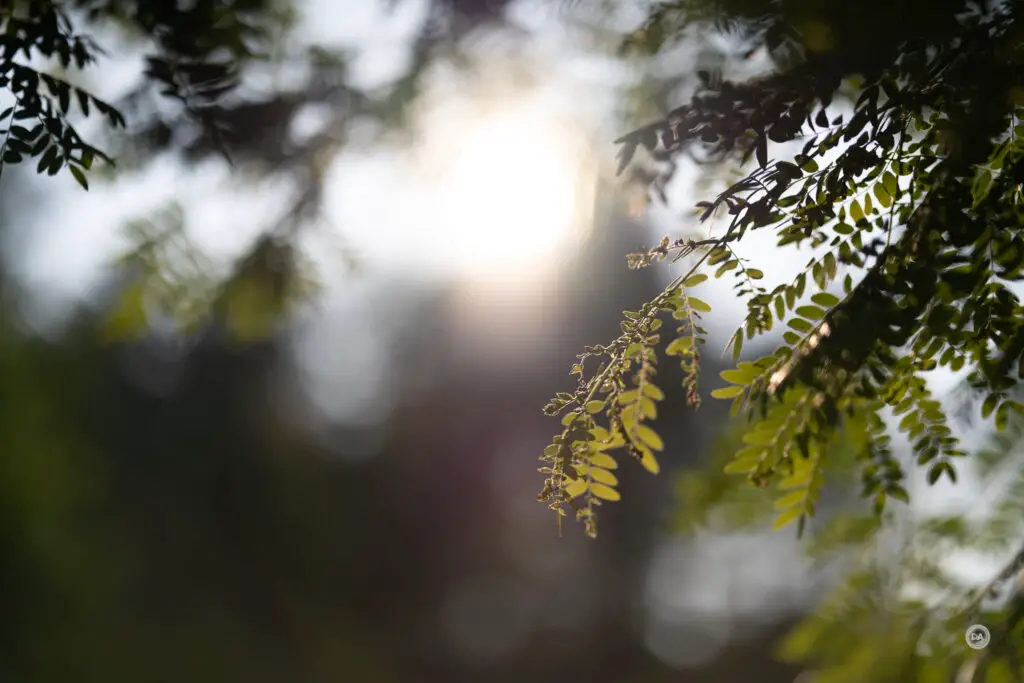
Pros:
- Lighter and small than competing lenses
- Nice build quality complete with weather sealing
- Fast, quiet autofocus
- Good focus precision
- Very sharp across rule of thirds
- Excellent portrait distance sharpness even wide open
- Beautiful bokeh
- Minimal fringing
- Creative flares
- Good price to performance ratio
Cons:
- Some focus shift
- Flare at small apertures gets ugly
- Geometry of specular highlights isn’t great
_________________________________________________________________________
GEAR USED:
Purchase the LK Samyang 85mm F1.8 P @ B&H Photo | Adorama | Amazon | Amazon Canada | Amazon UK | Amazon Germany | LK Samyang
Purchase the LK Samyang 16mm F2.8 P @ B&H Photo | Adorama | Amazon | Amazon Canada | Amazon UK | Amazon Germany | LK Samyang
___________________________________________________________________
Purchase the Sony a7RV @ B&H Photo | Adorama | Amazon | Camera Canada | Sony Canada | Amazon Canada | Amazon UK | Amazon Germany
__________________________________________________________________
Purchase the Sony a7IV @ B&H Photo | Adorama | Amazon | Camera Canada | Sony Canada | Amazon Canada | Amazon UK | Amazon Germany
_________________________________________________________________
Purchase the Sony Alpha 1 @ Camera Canada | B&H Photo | Adorama | Amazon | Sony Canada | Amazon Canada | Amazon UK | Amazon Germany | Ebay
_________________________________________________________________
Want to support this channel? Use these affiliate links to shop at: B&H Photo | Amazon | Adorama | Camera Canada | Amazon Canada | Amazon UK | Ebay | Make a donation via Paypal
Buy DA Merchandise https://bit.ly/TWIMerch
Keywords: #LKSamyang1885Prima, LK Samyang AF 85mm F1.8 P FE, LK Samyang AF 85mm F1.8 P FE Review, #Samyang, #LKSamyang, #85mmF1.8, #FE, #Prima, #compact, #wideangle, #autofocus, #photography, #video, #review, #optics, #sharpness, #distortion, #vignetting, #MTF, #buildquality, #weathers sealing, #macro, #focusdistance, #magnification, #vamp, #distortioncorrection, #fringe, #chromaticaberration, #flare resistance, #handling, #buildmaterials, #Viltrox, #ViltroxAIRseries, #focusmotor, #autofocusspeed, #pros, #cons, #market, #competition, #pricing, Dustin Abbott, Real World, Comparison, Sharpness, Bokeh, Flare Resistance, Autofocus, Image Quality, Sample Images, Video, Photography, let the light in, weathersealing, #letthelightin, DA
DISCLAIMER: This article and description contains affiliate links, which means that if you click on one of the product links, I’ll receive a small commission. As an Amazon Associate I earn from qualifying purchases.










 Viltrox AIR 15mm F1.7 X Review
Viltrox AIR 15mm F1.7 X Review 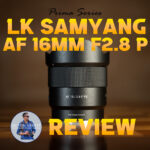 LK Samyang AF 16mm F2.8 Prima Review
LK Samyang AF 16mm F2.8 Prima Review 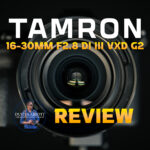 Tamron 16-30mm F2.8 Di III VXD G2 Review
Tamron 16-30mm F2.8 Di III VXD G2 Review  GOOVIS ART Head Mounted Display Review
GOOVIS ART Head Mounted Display Review 
